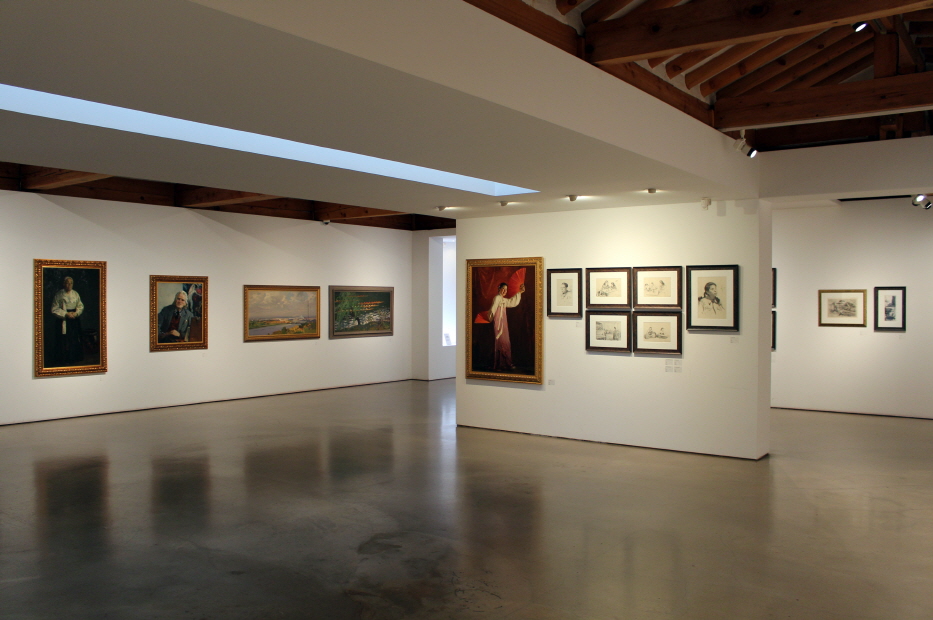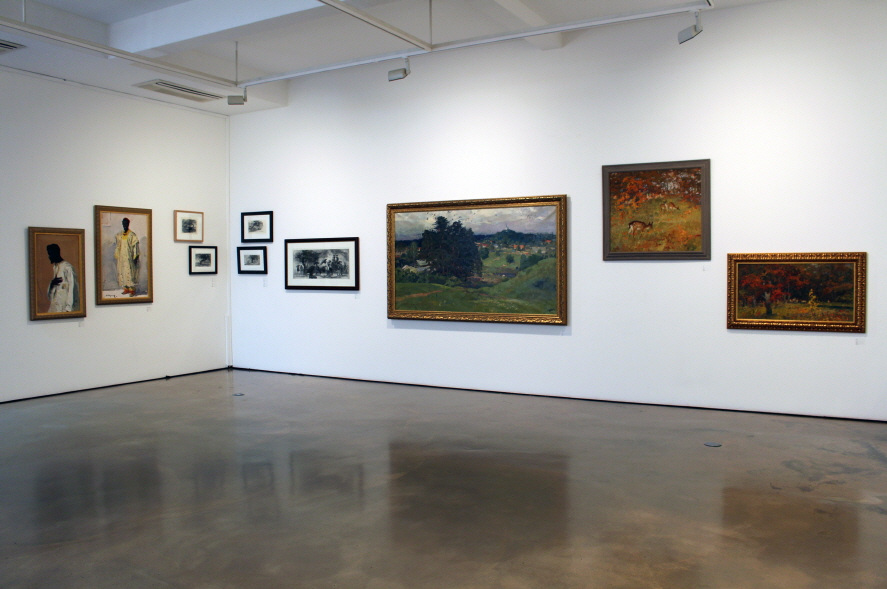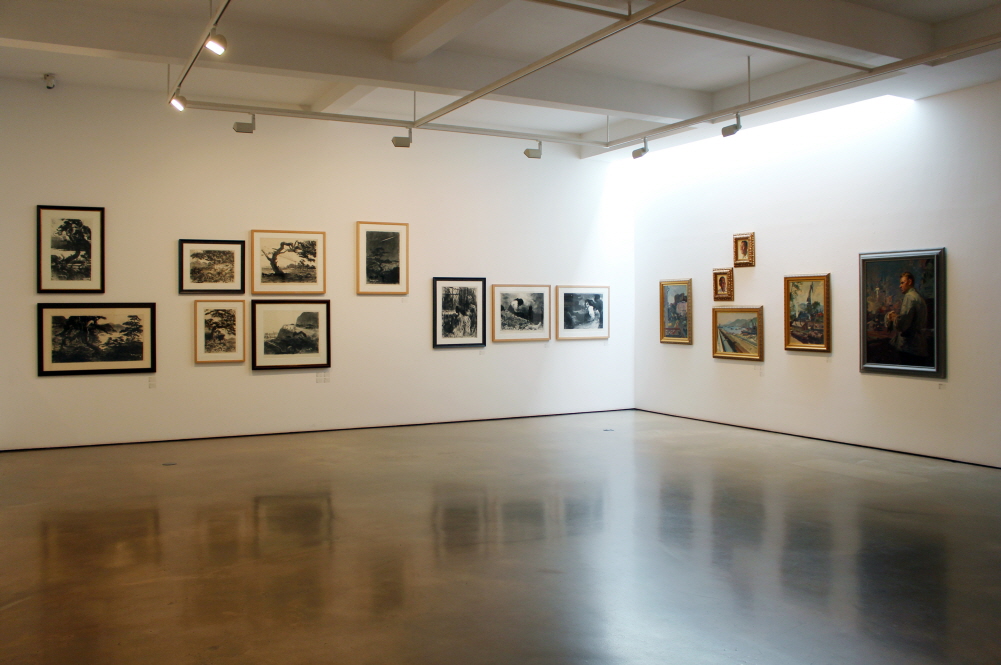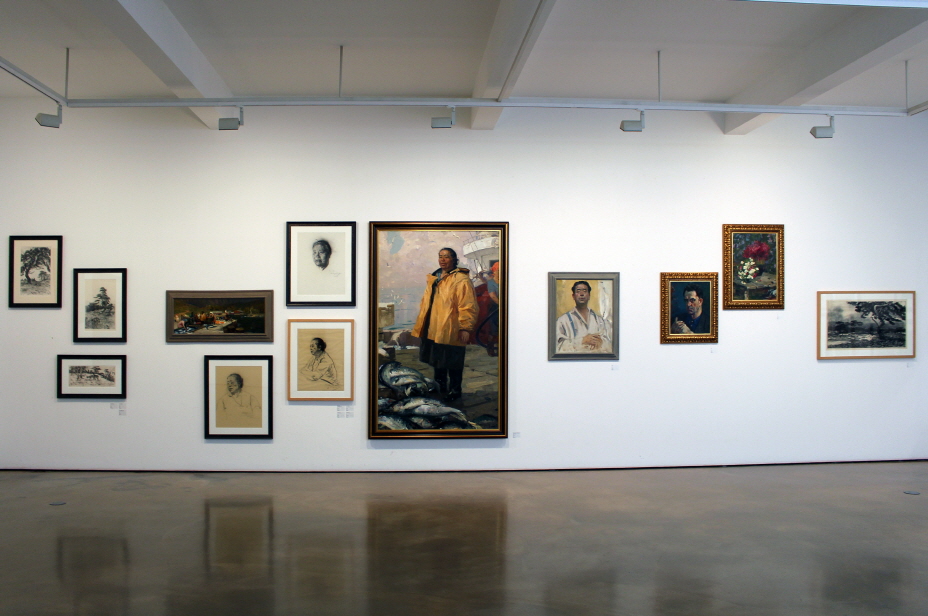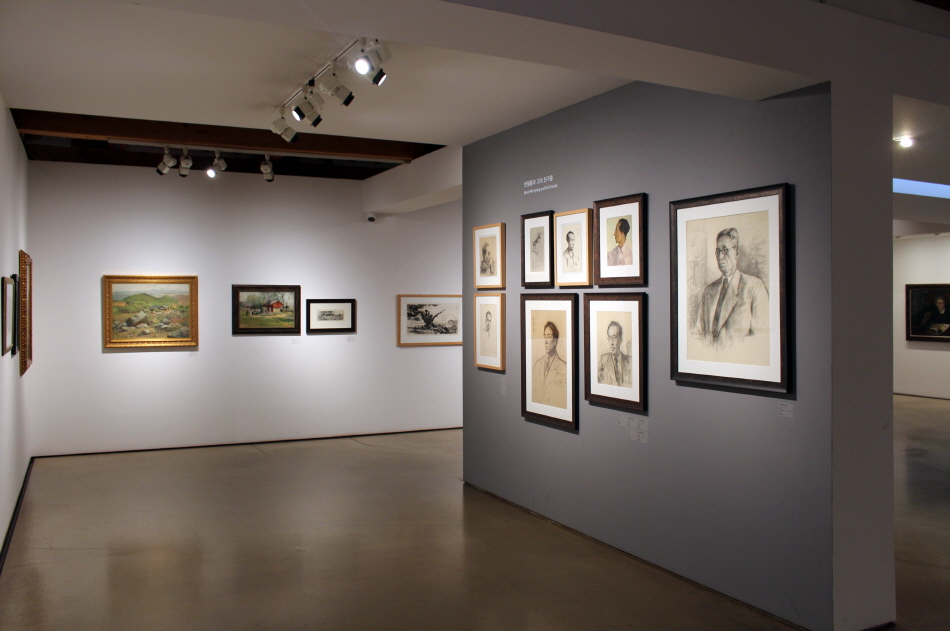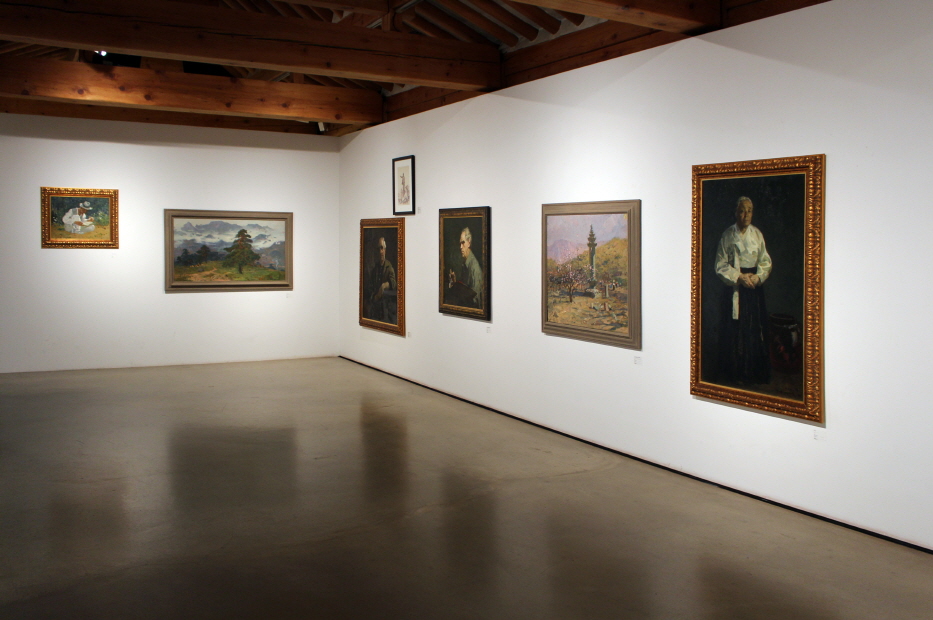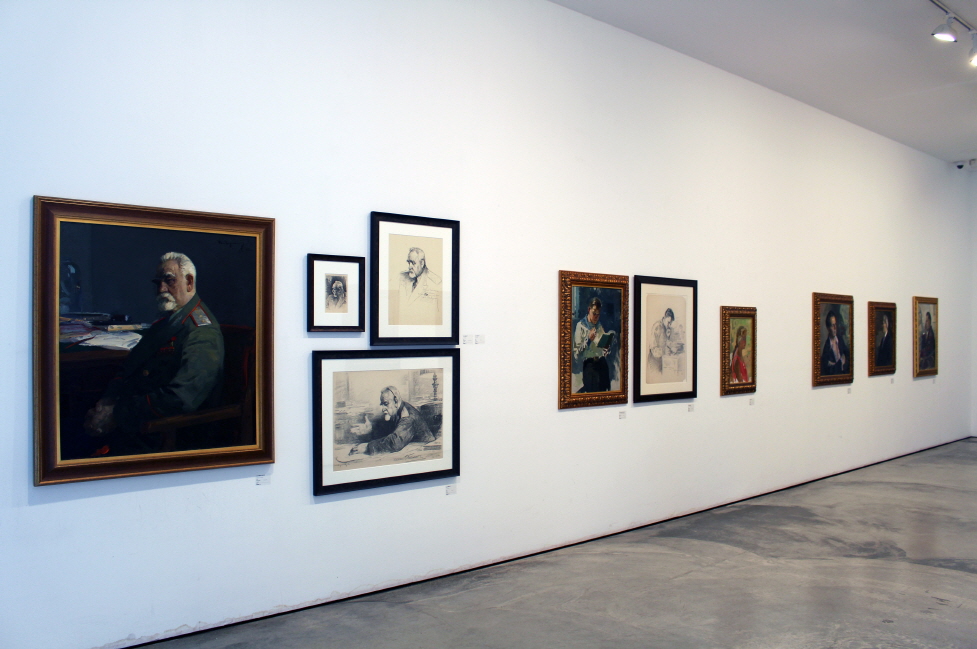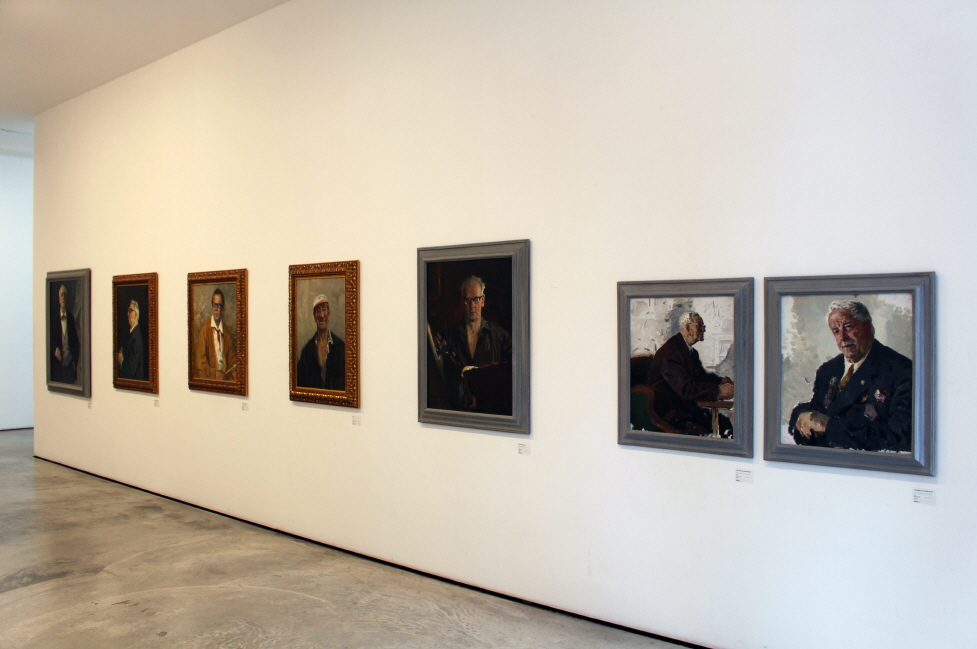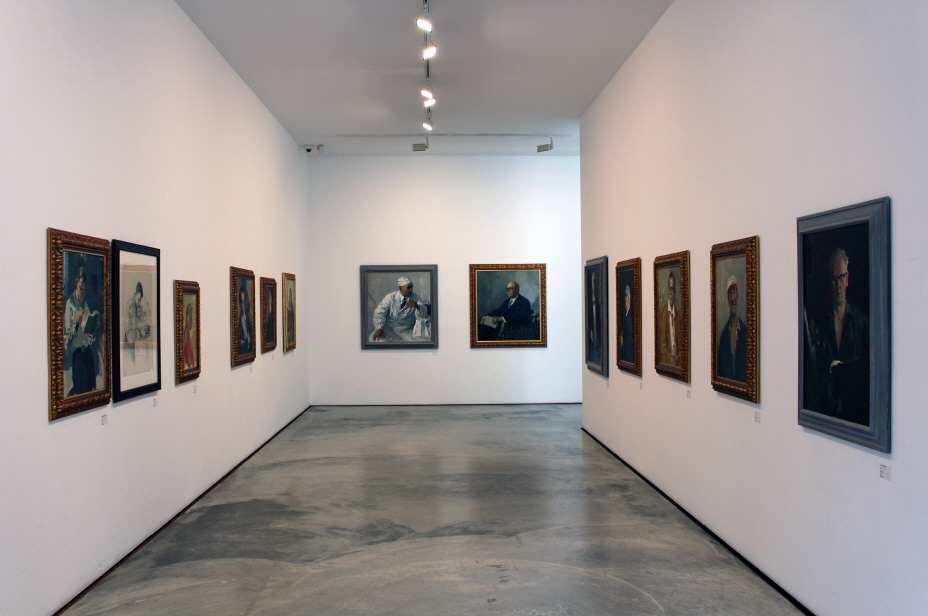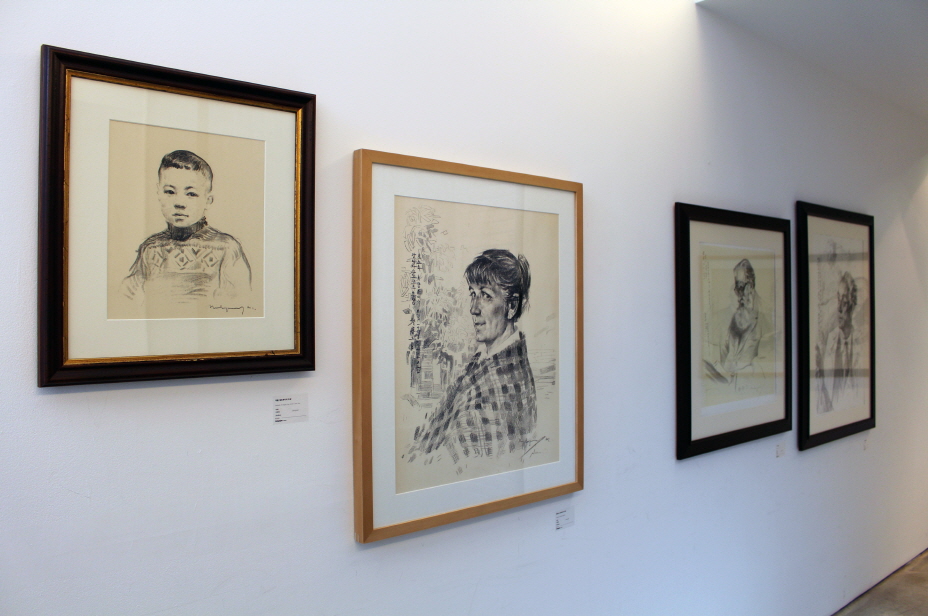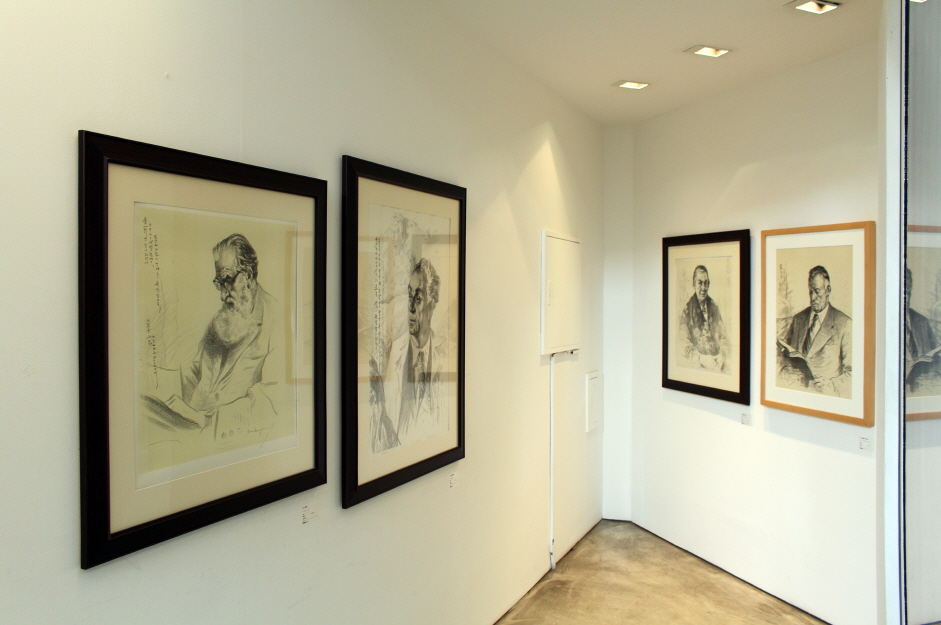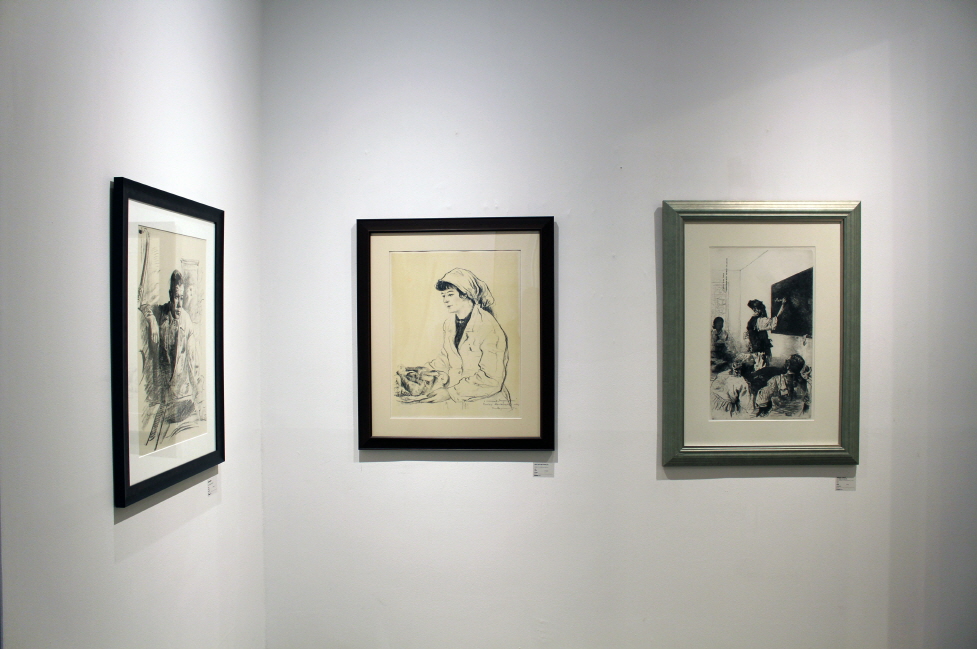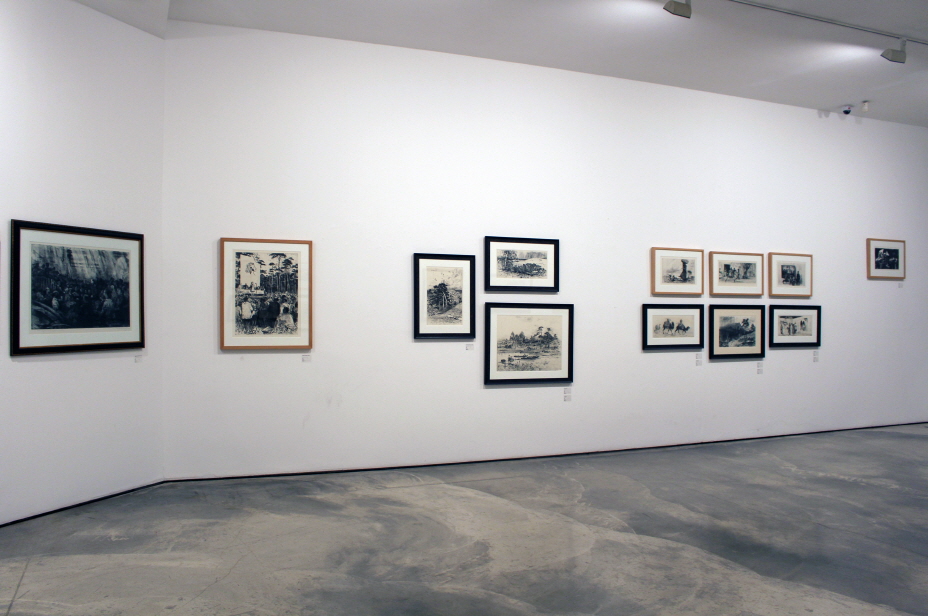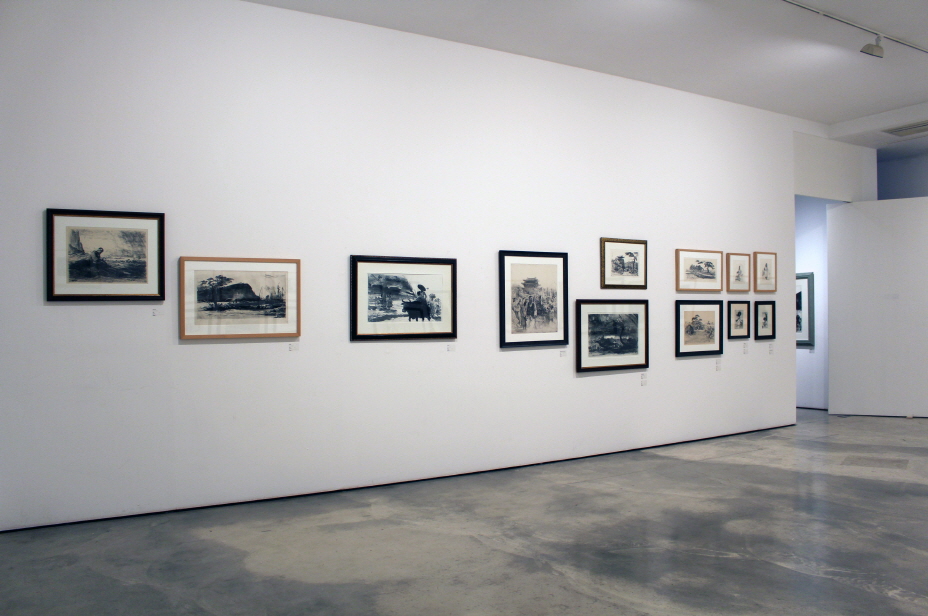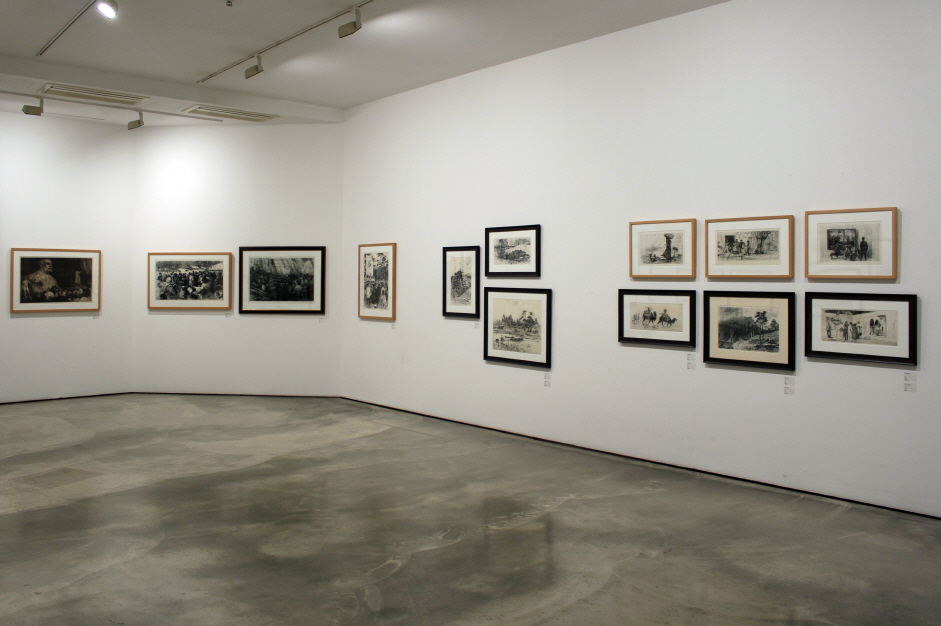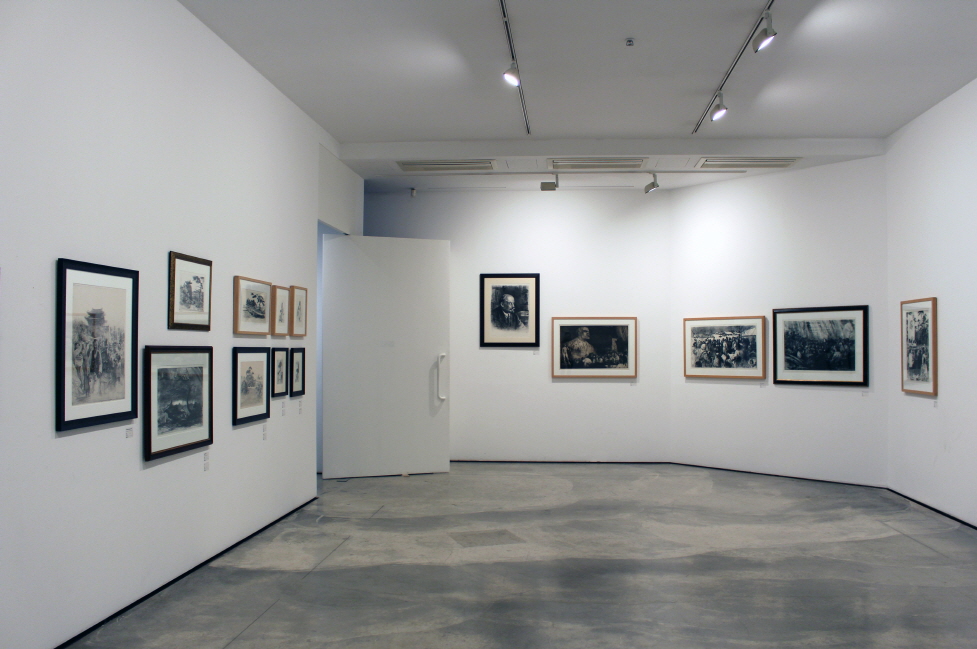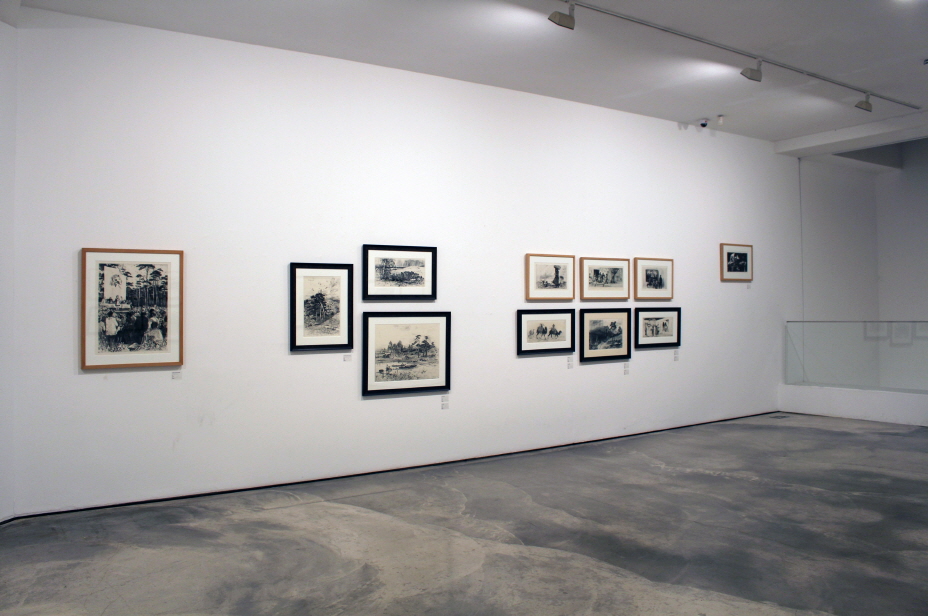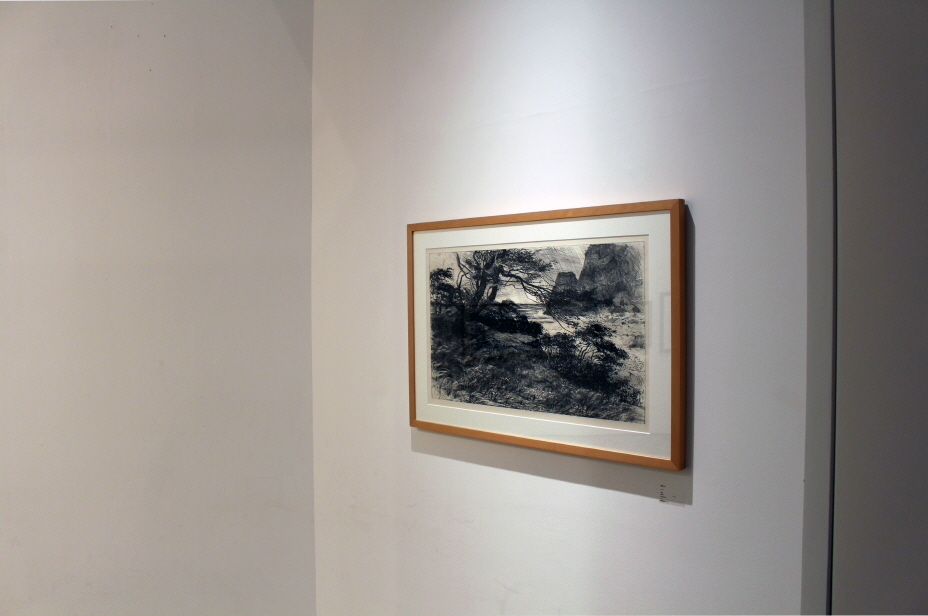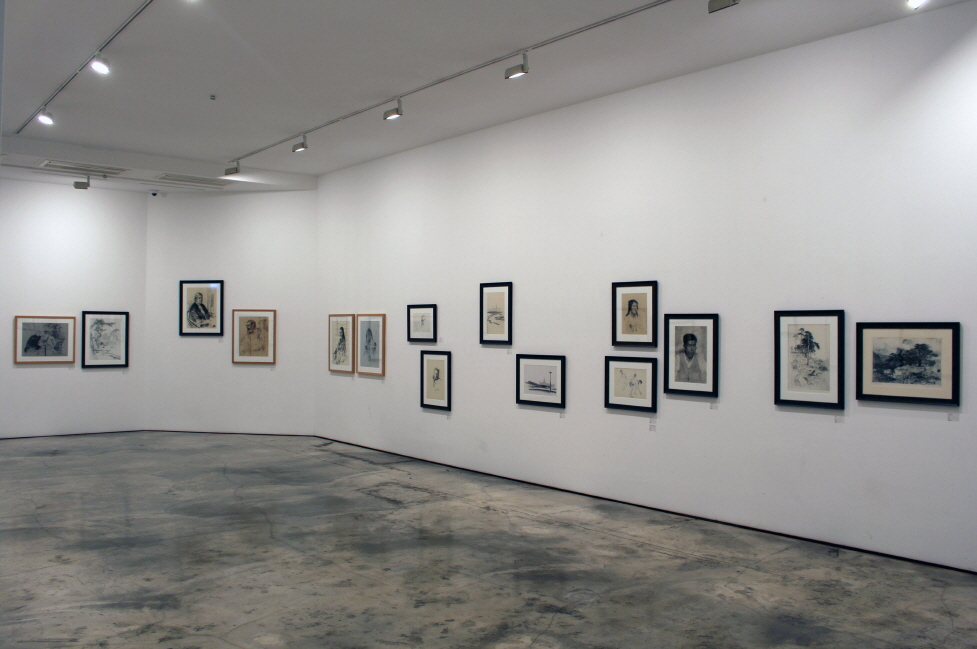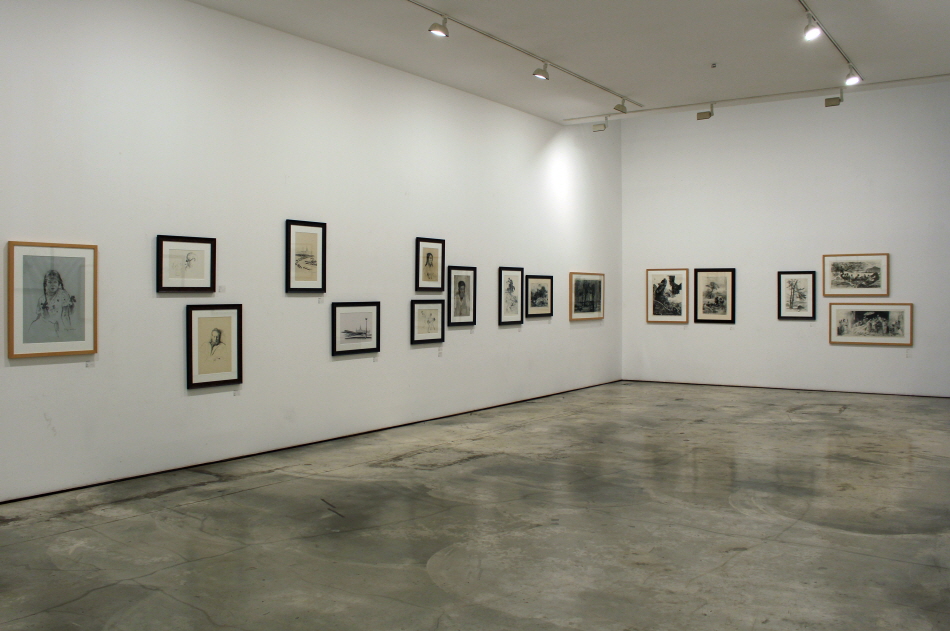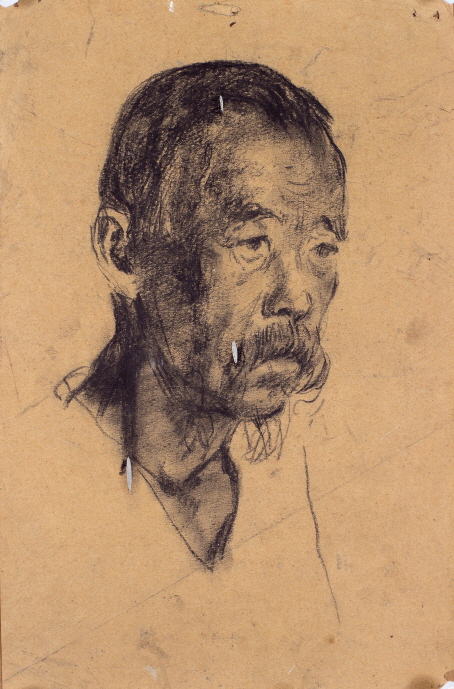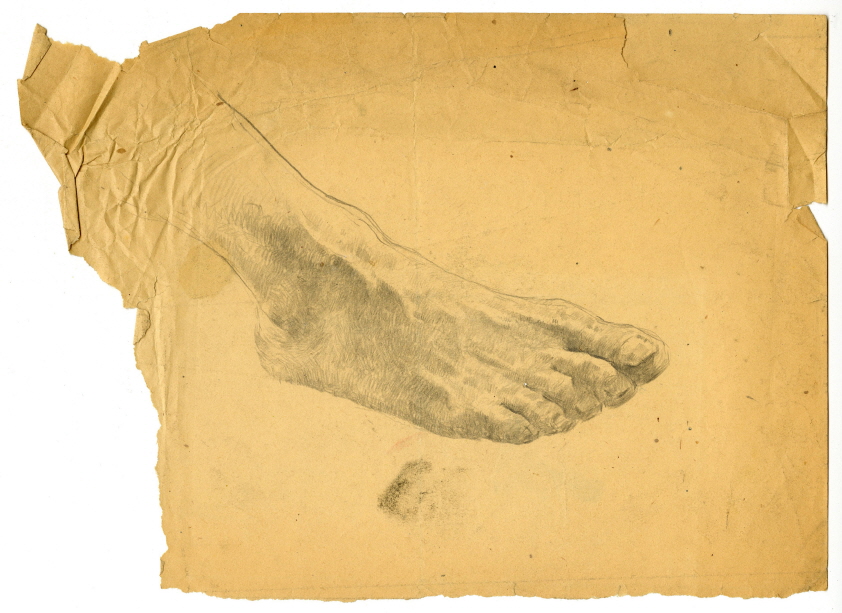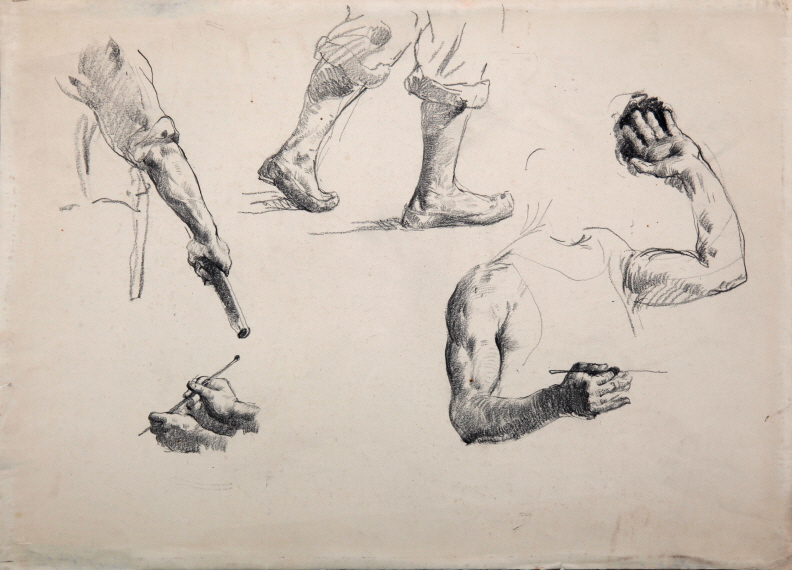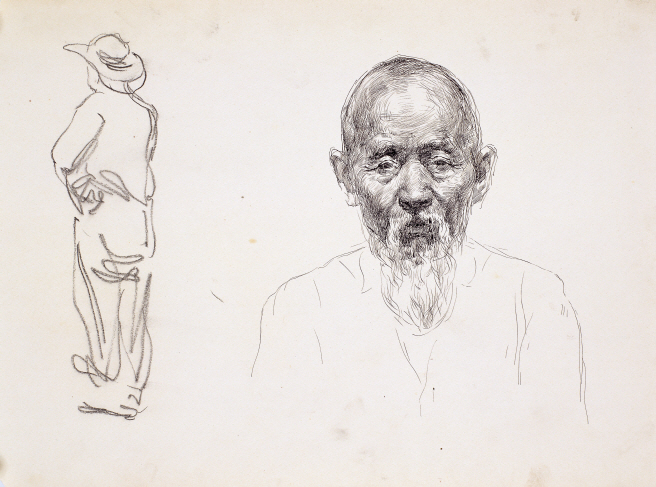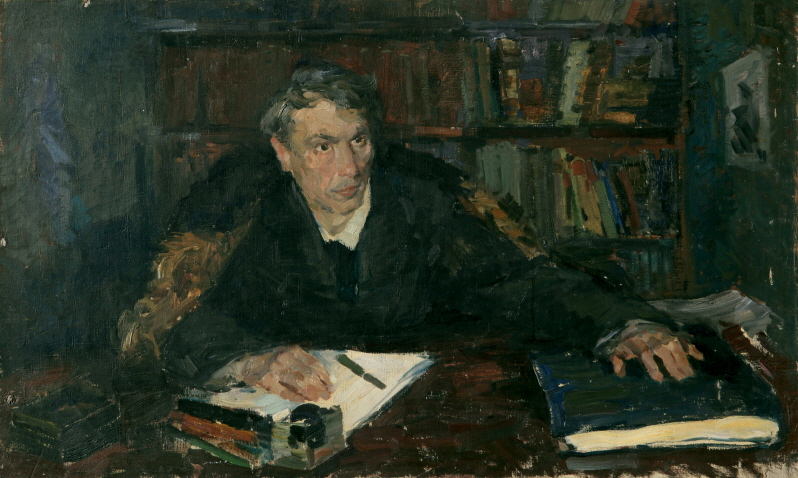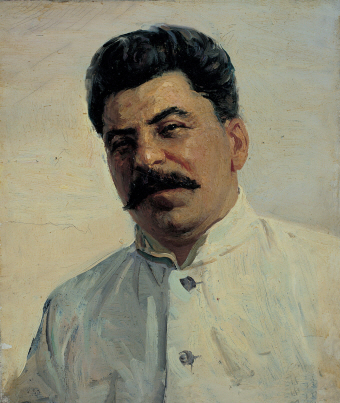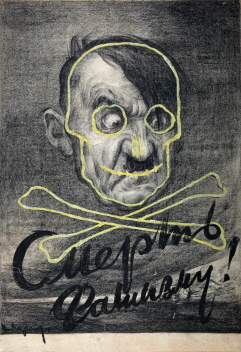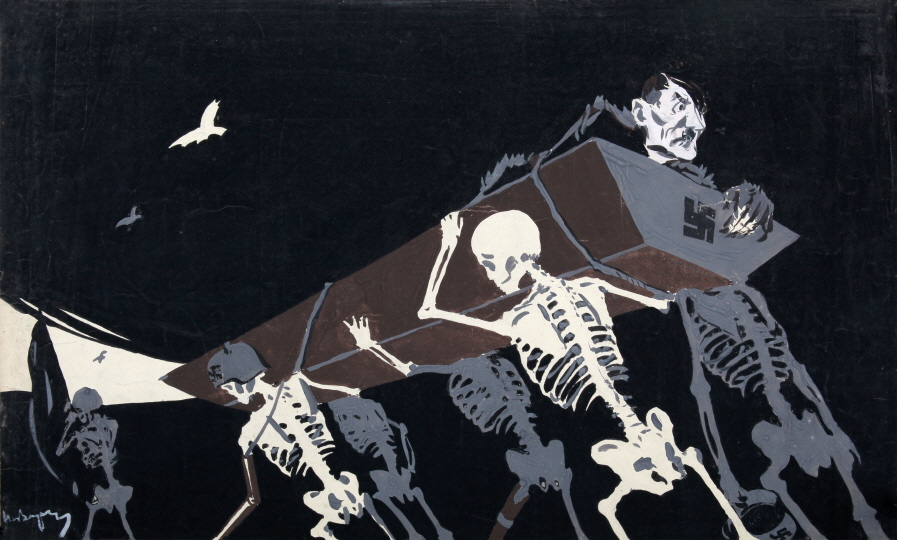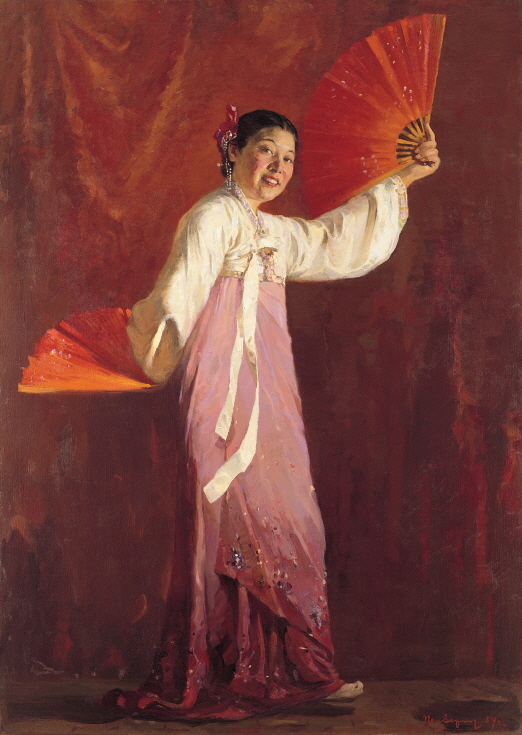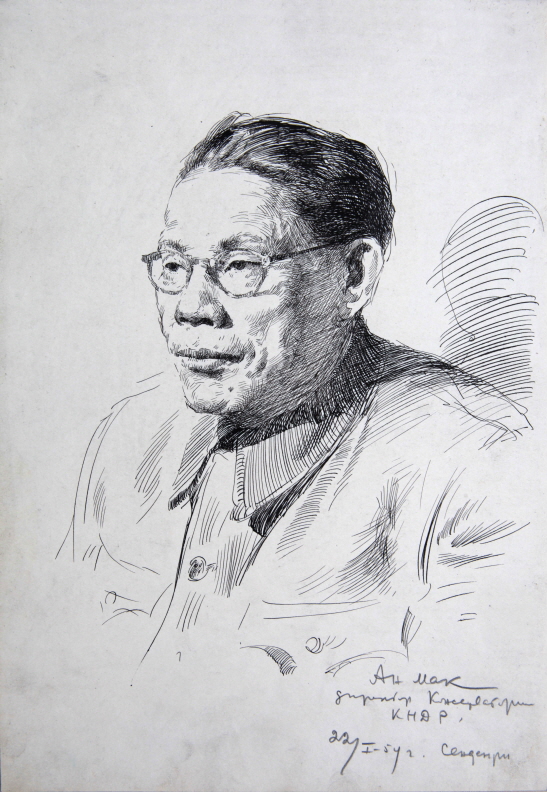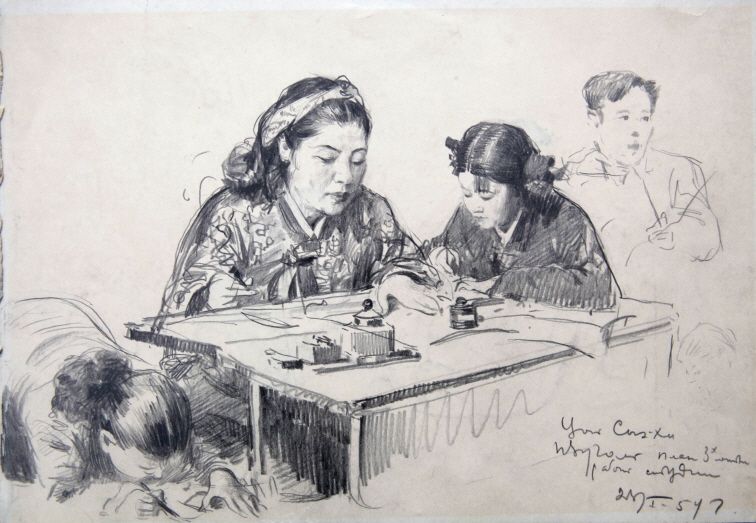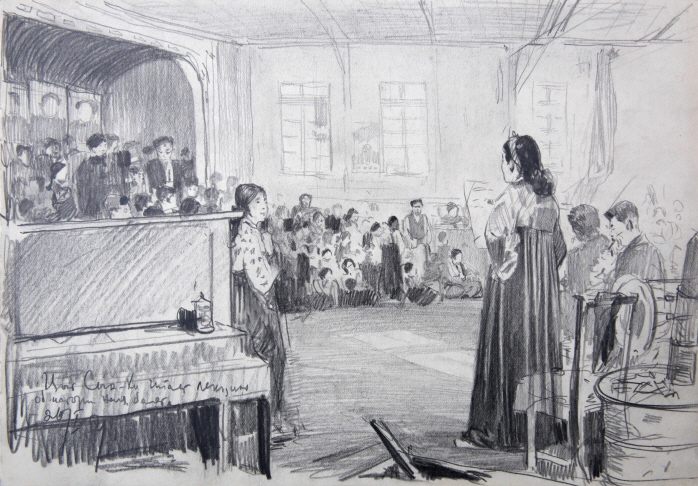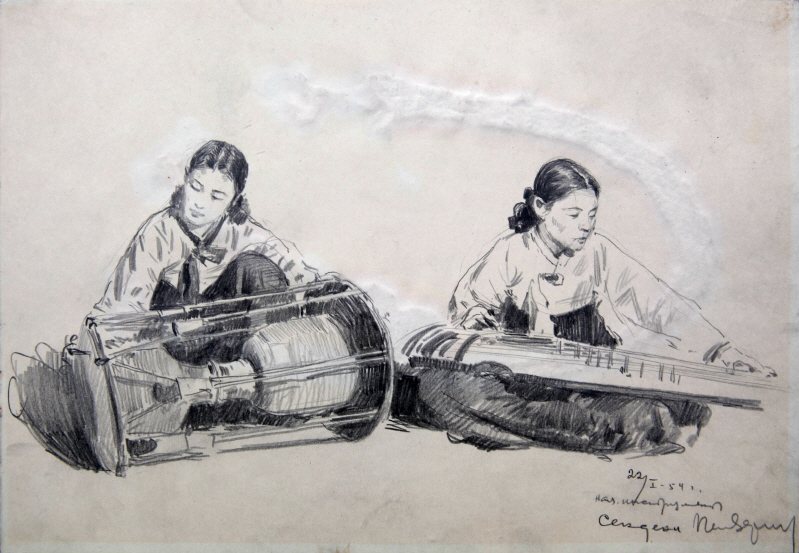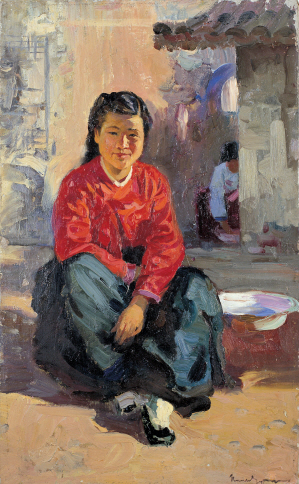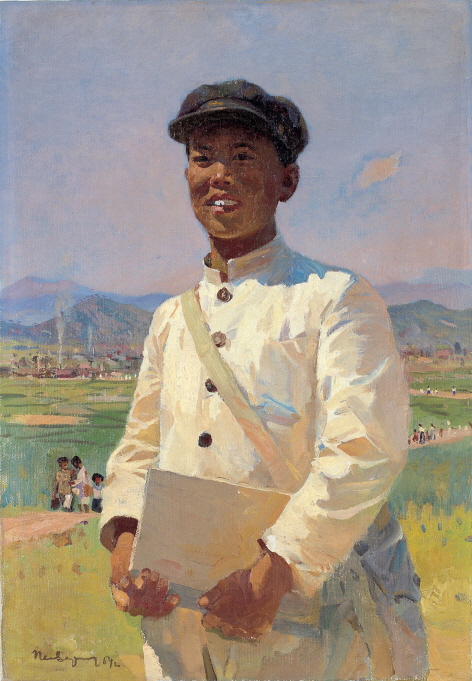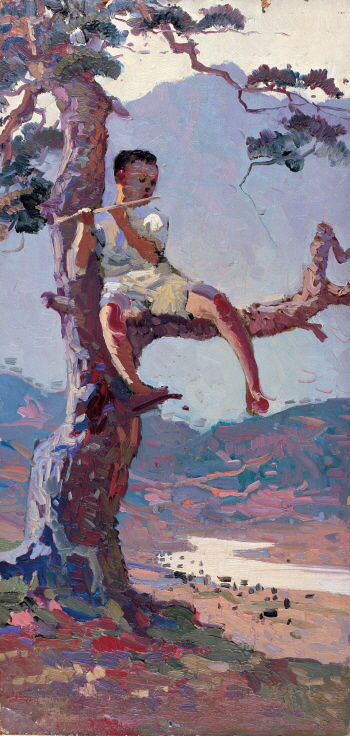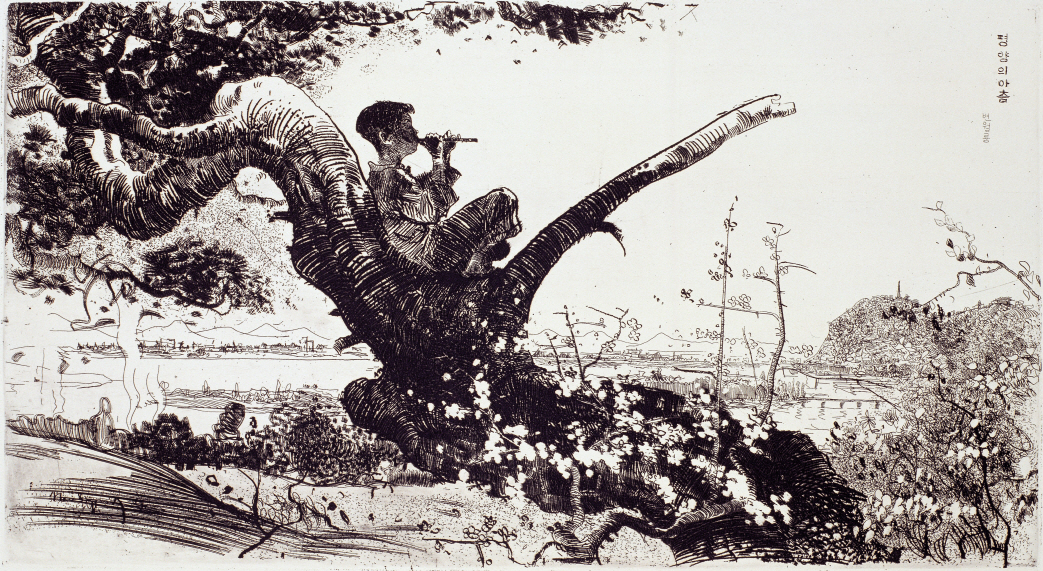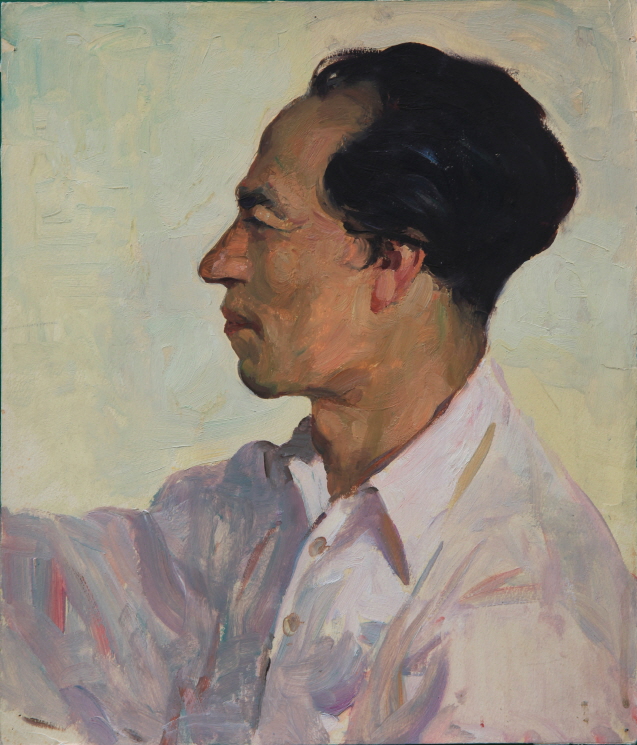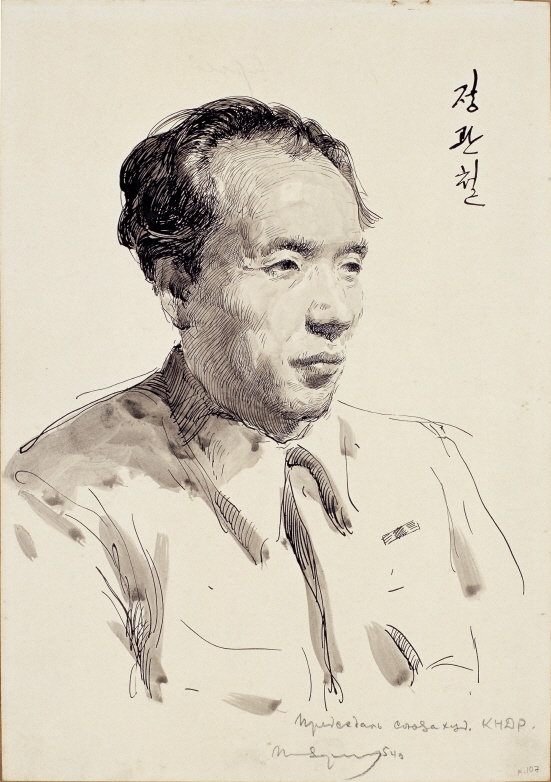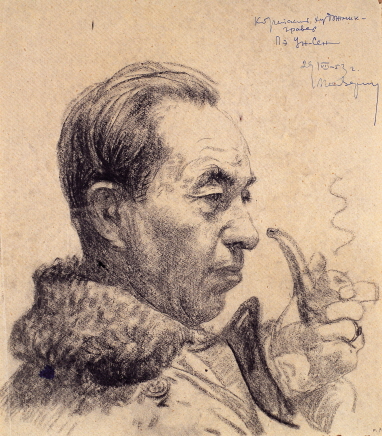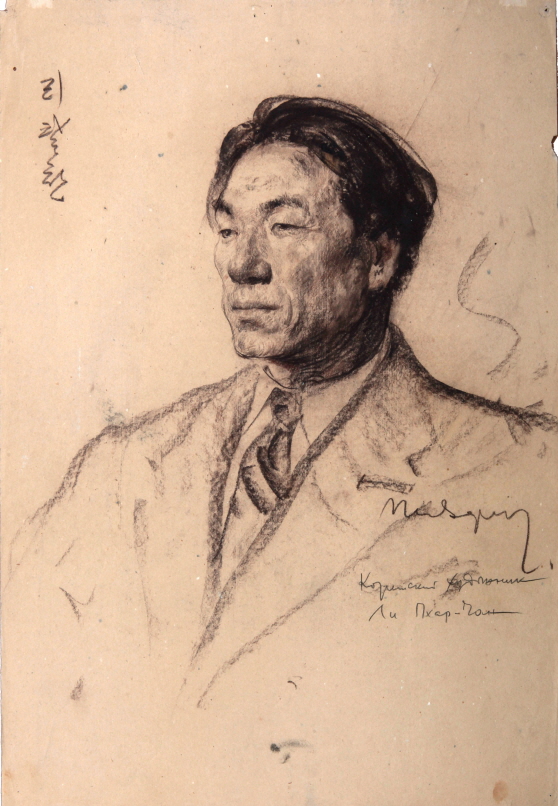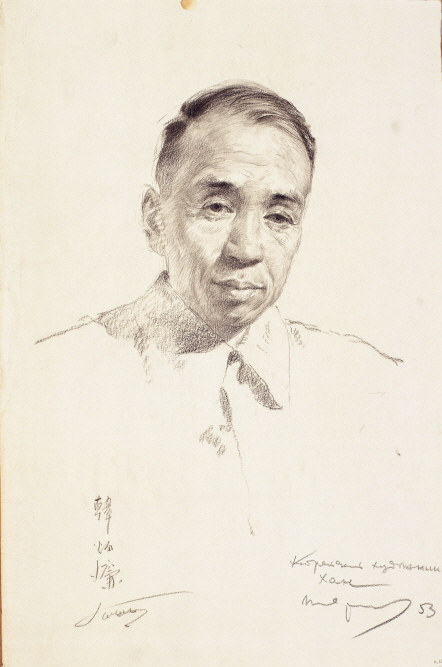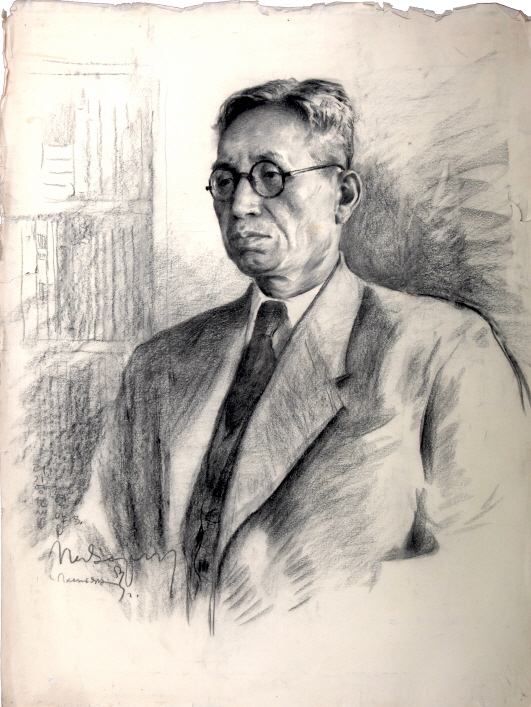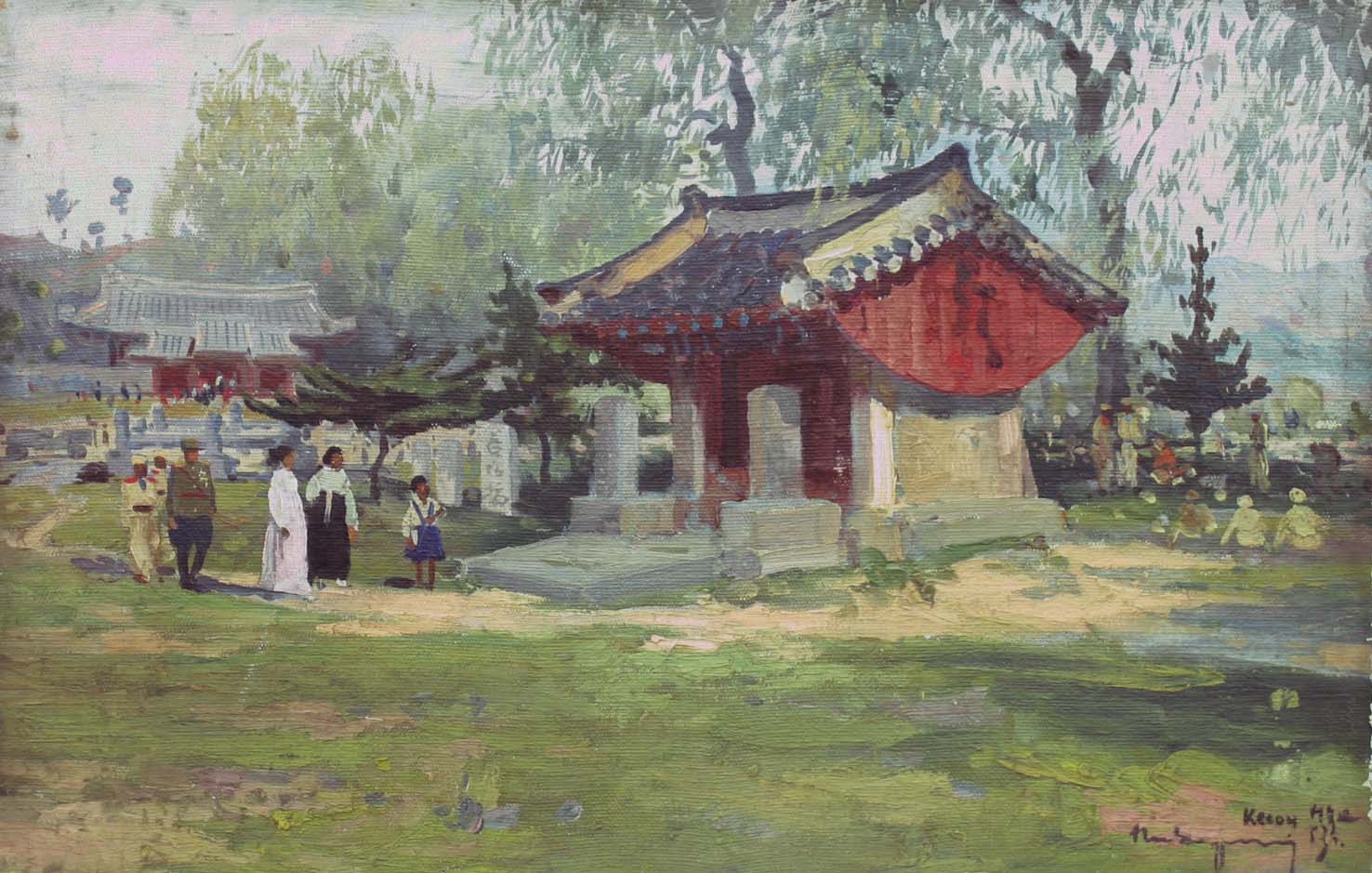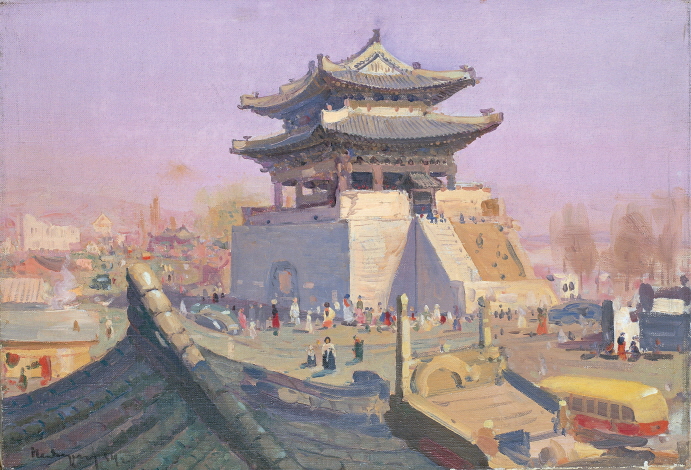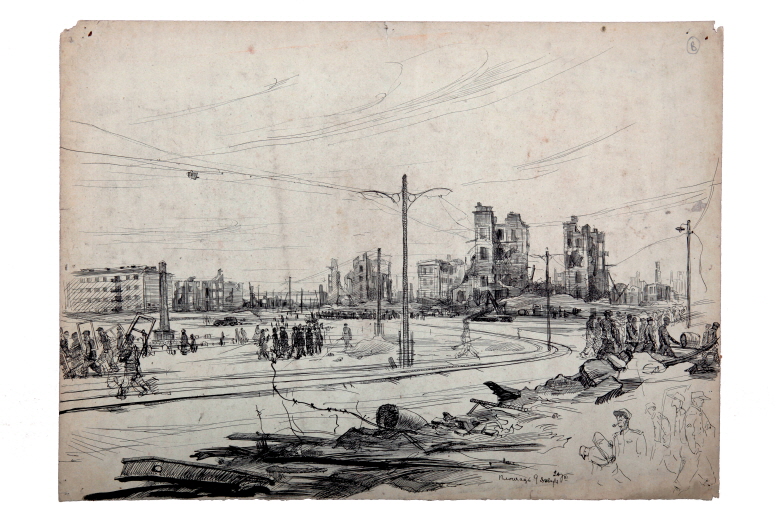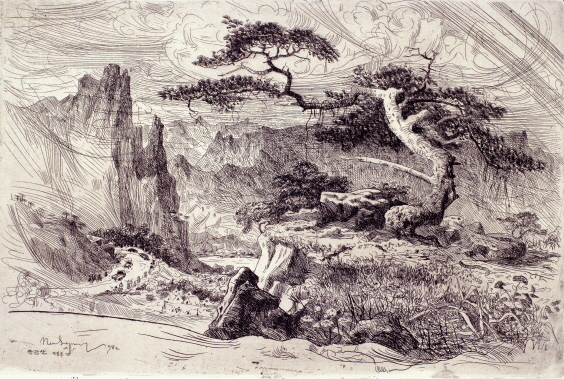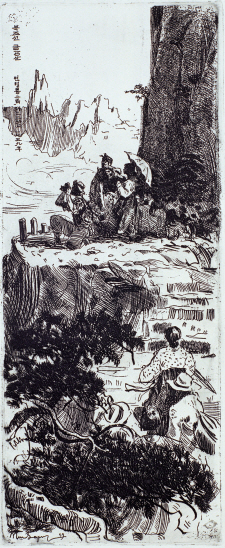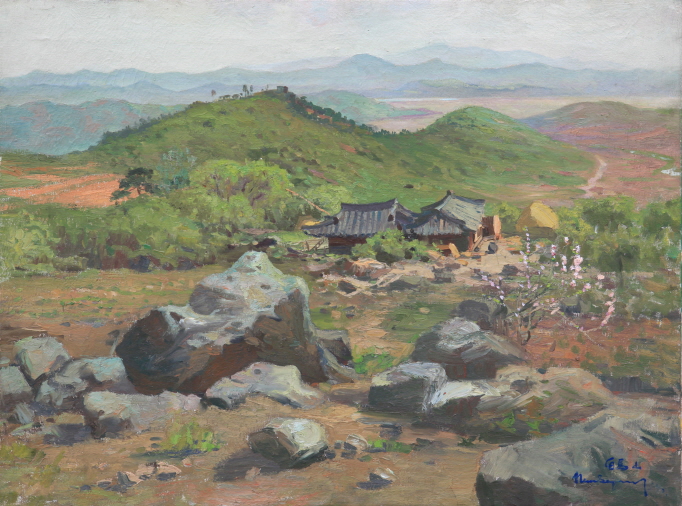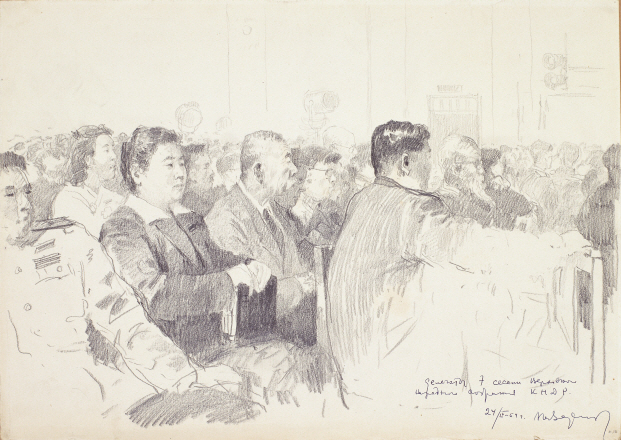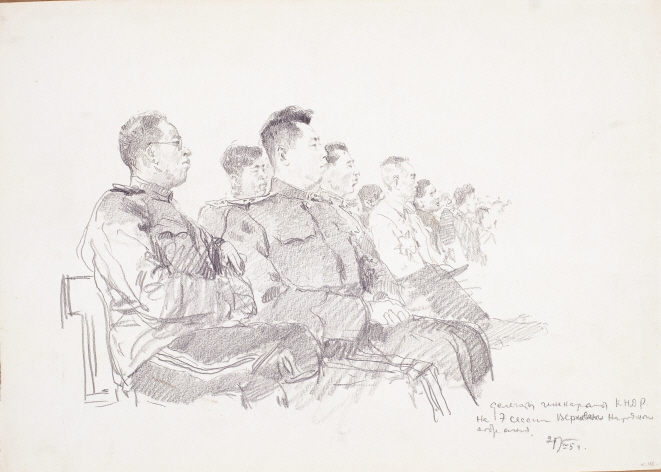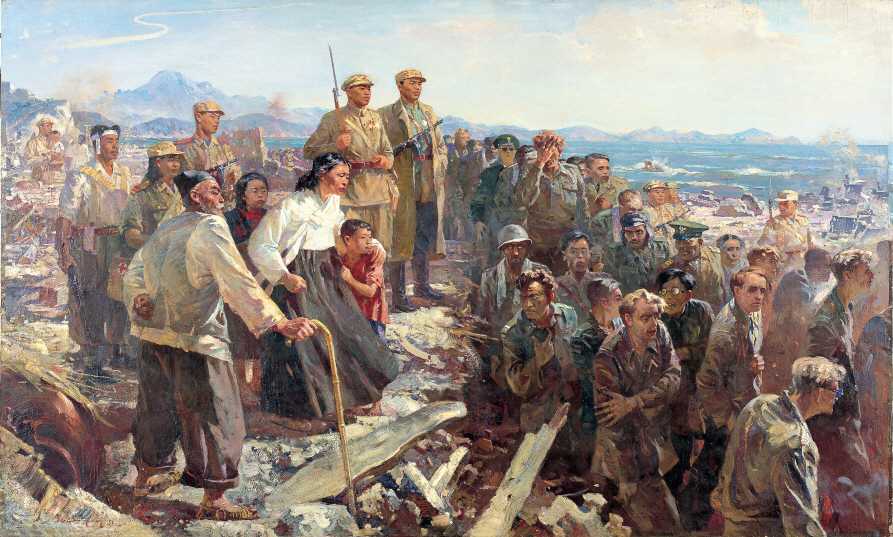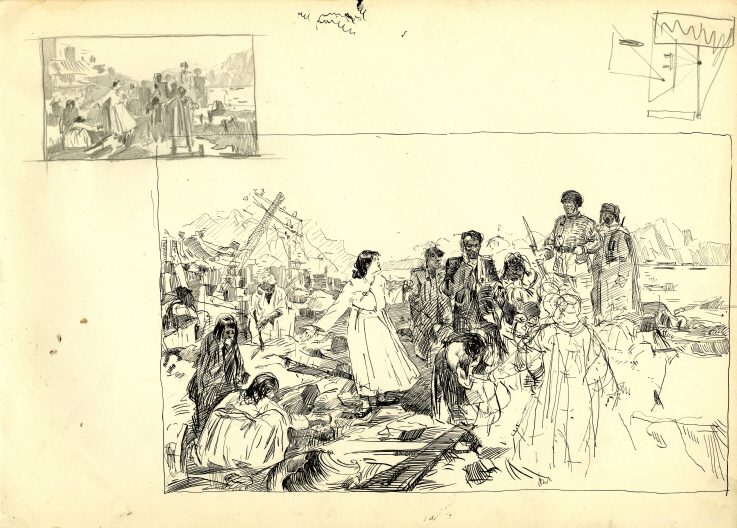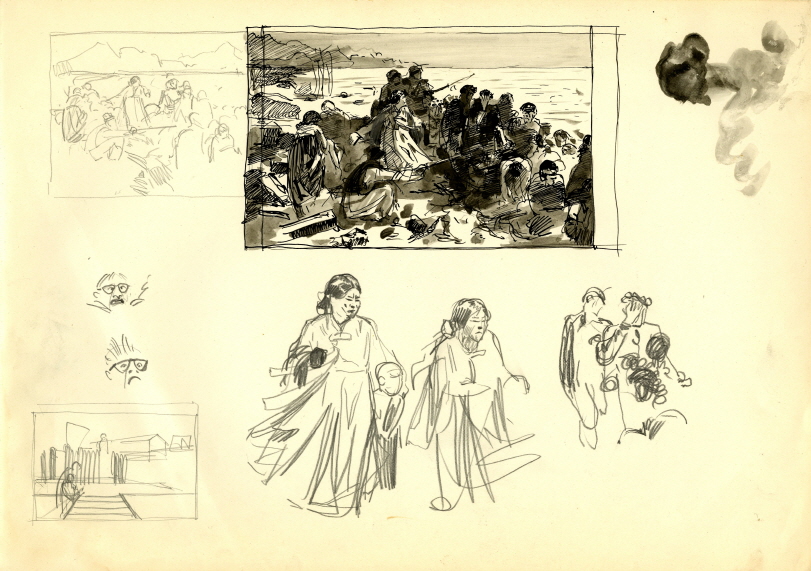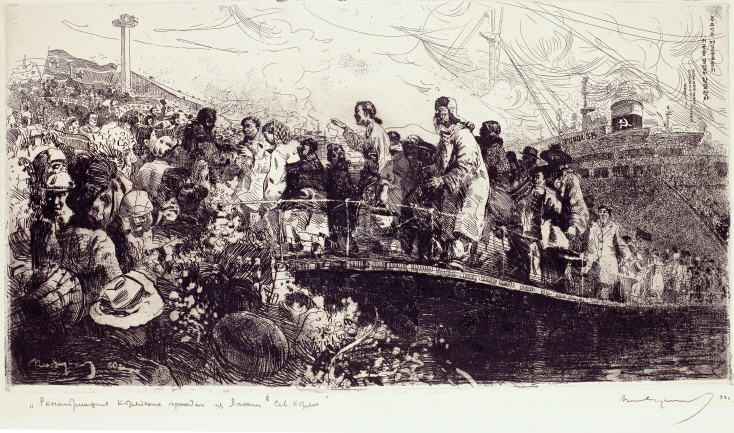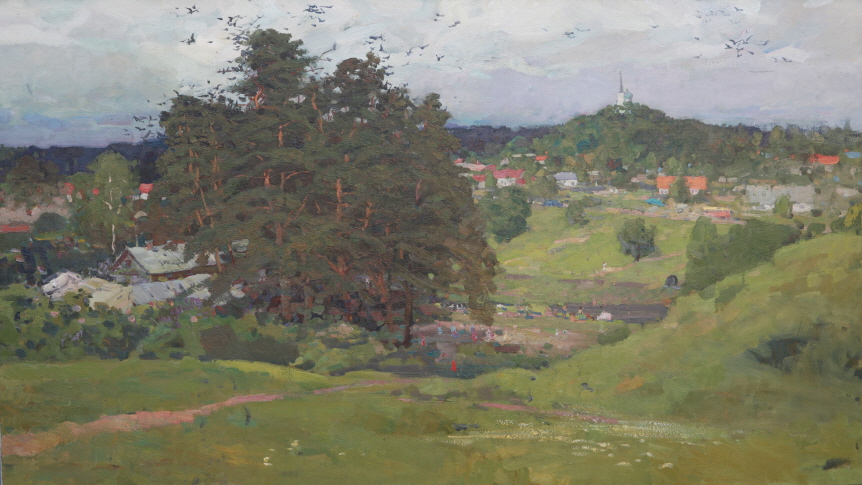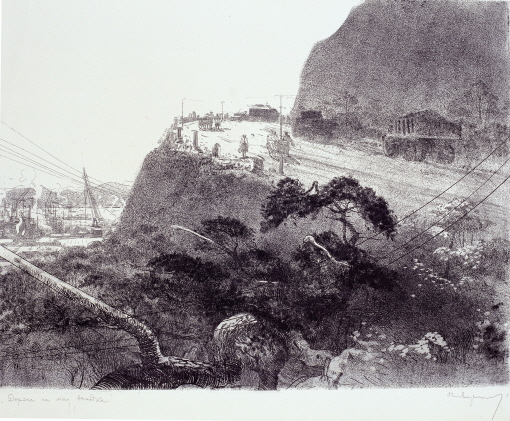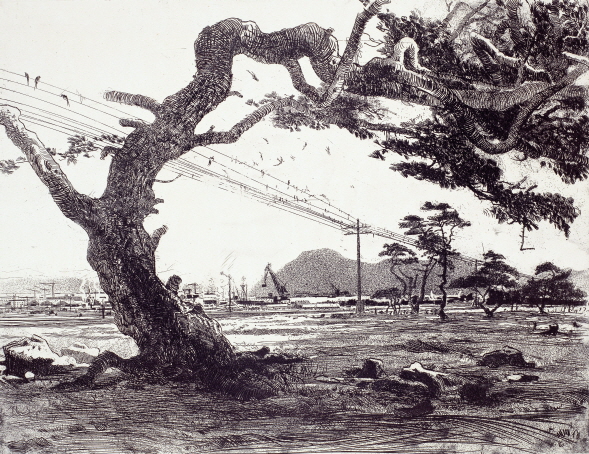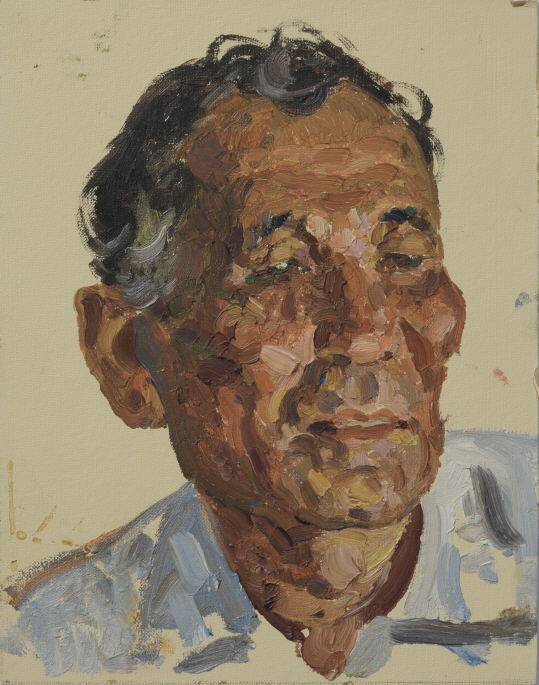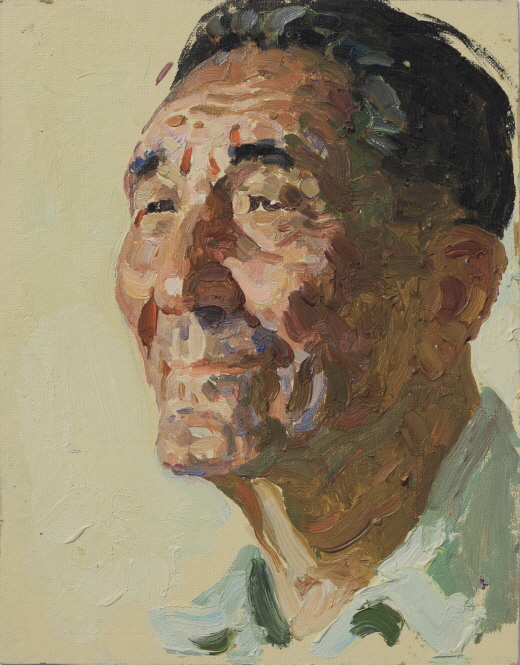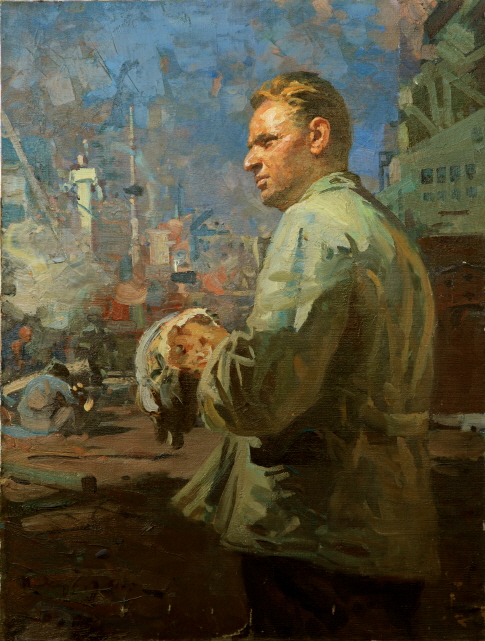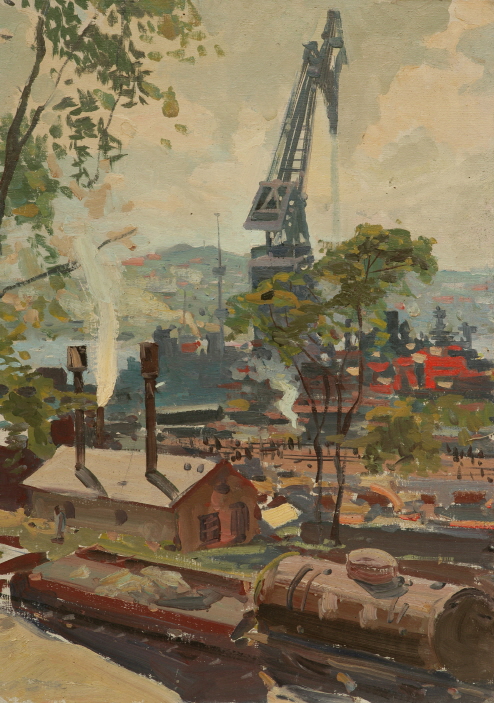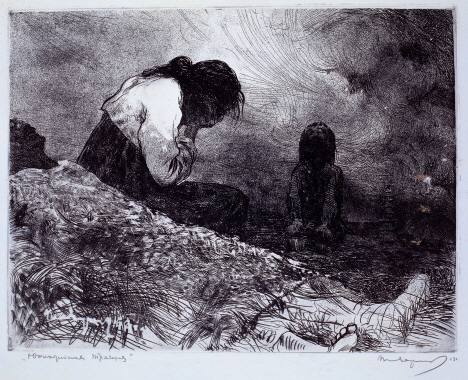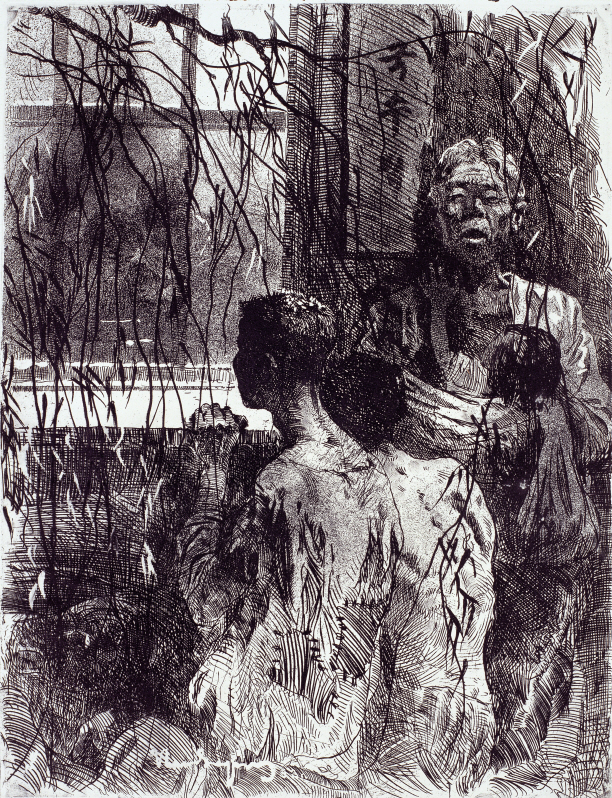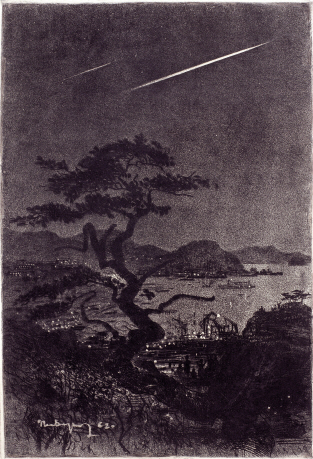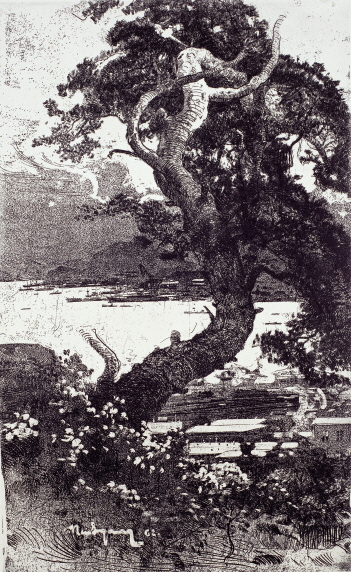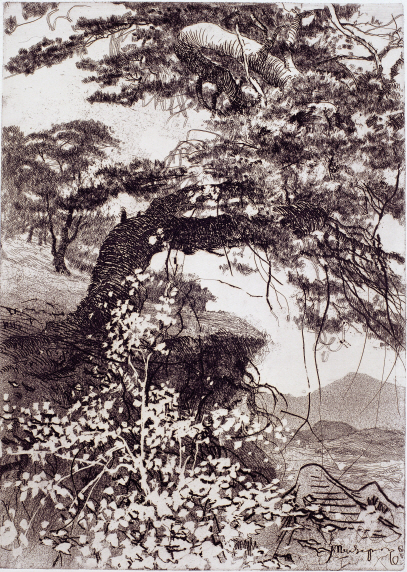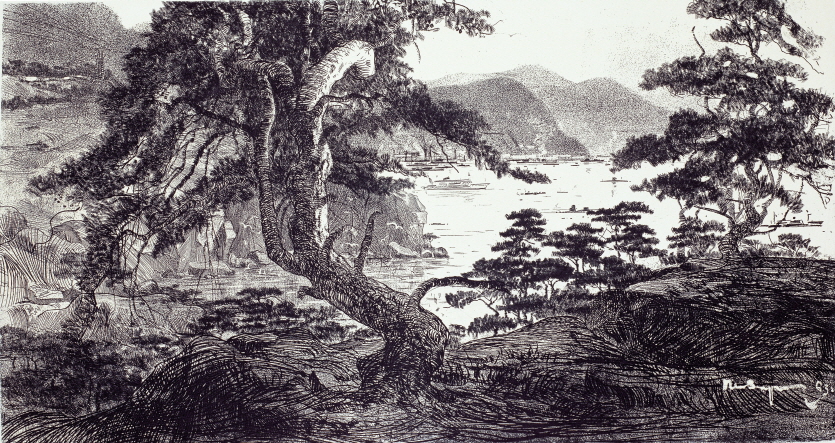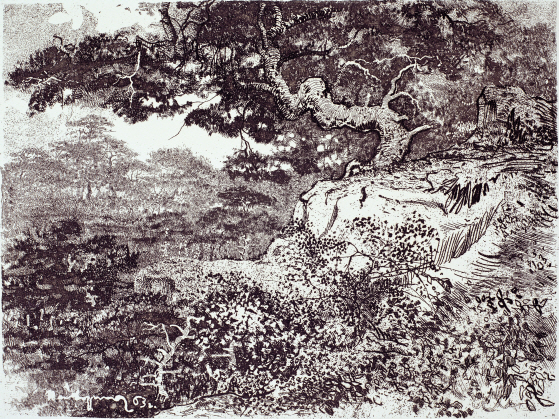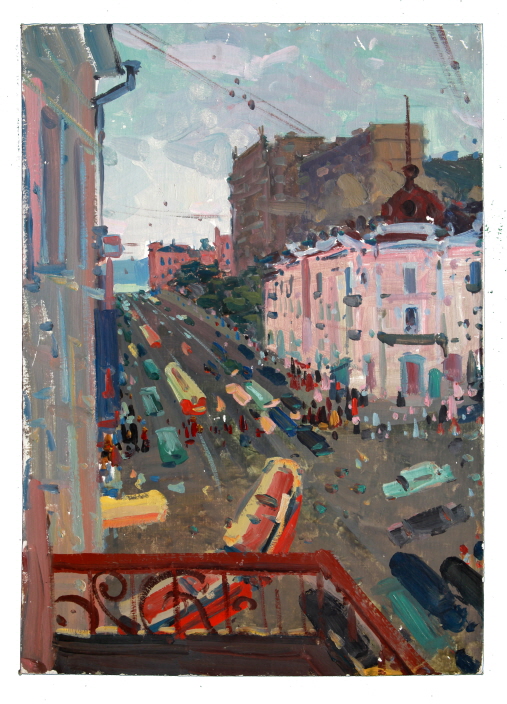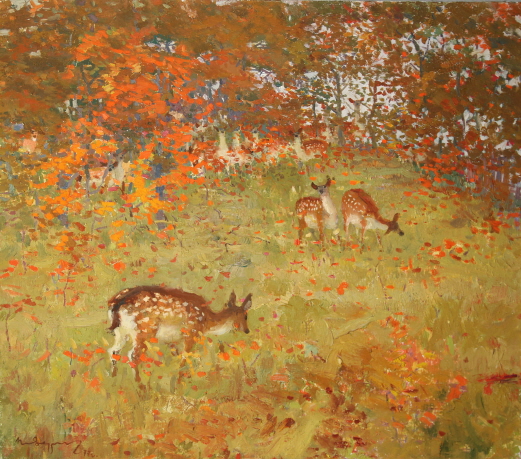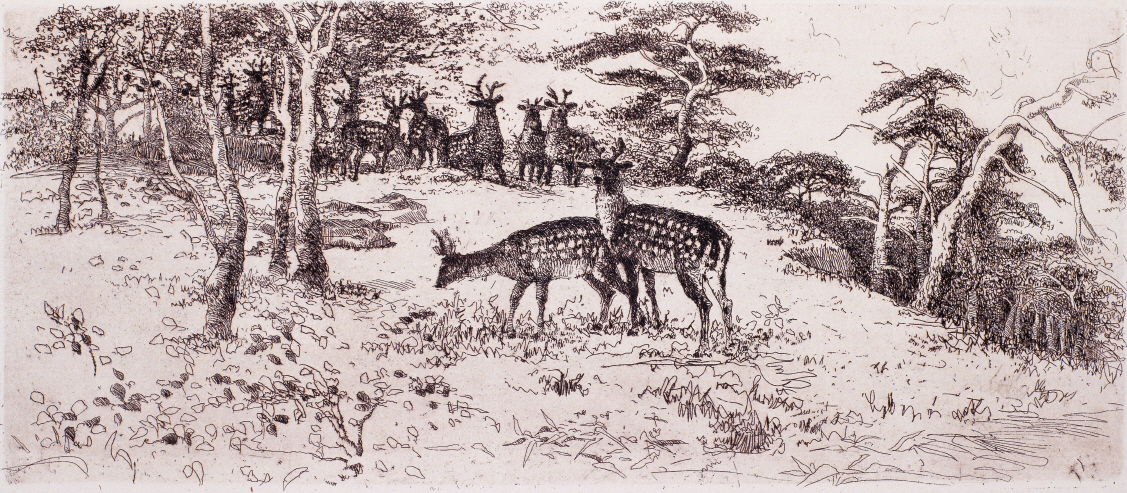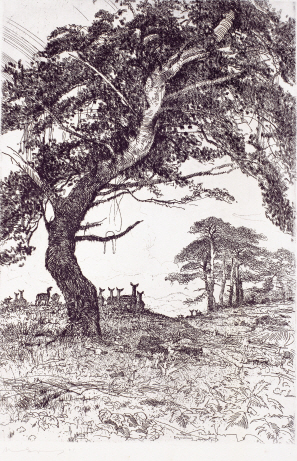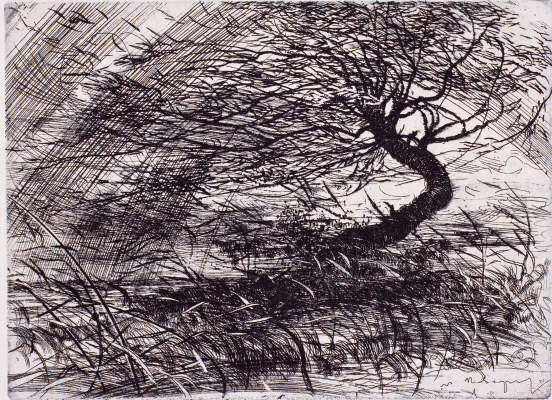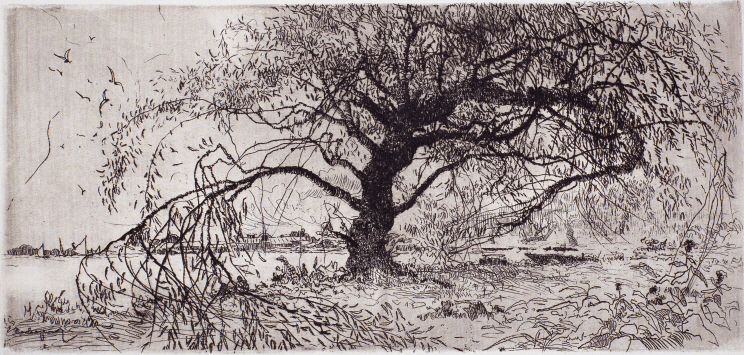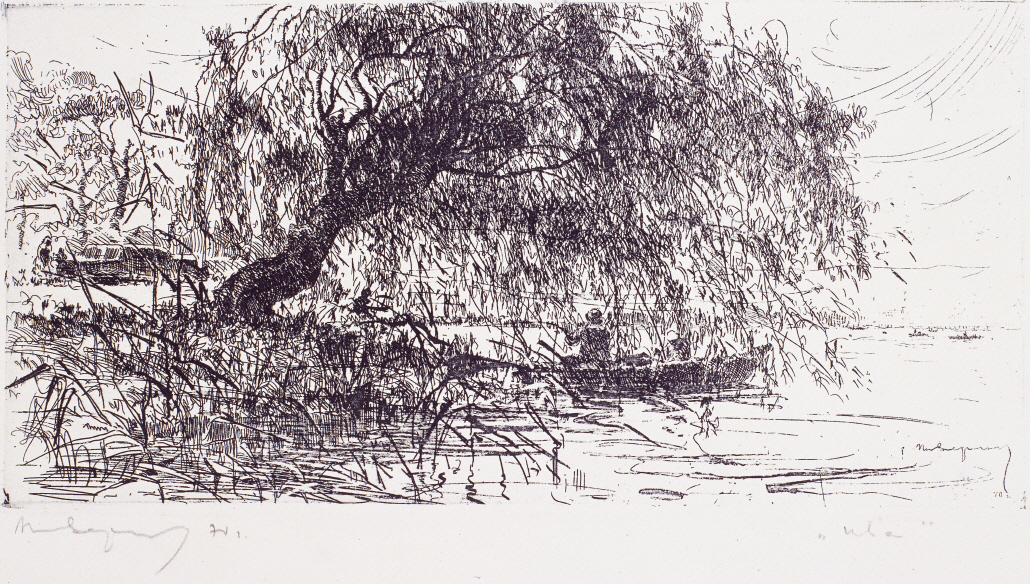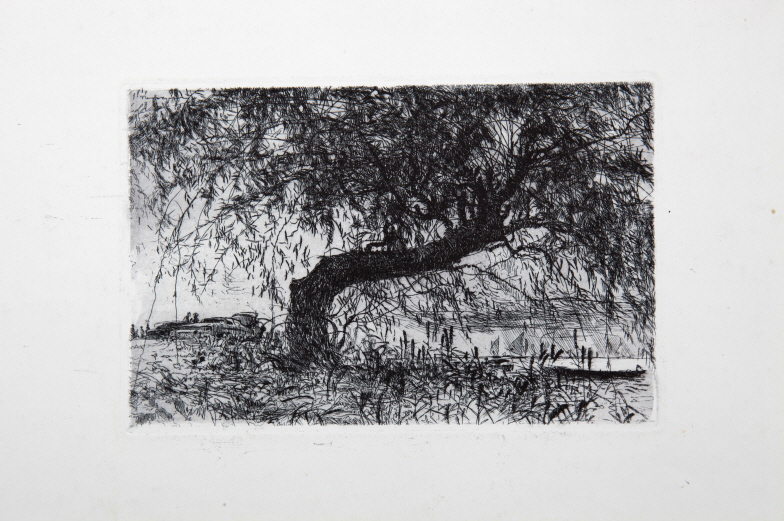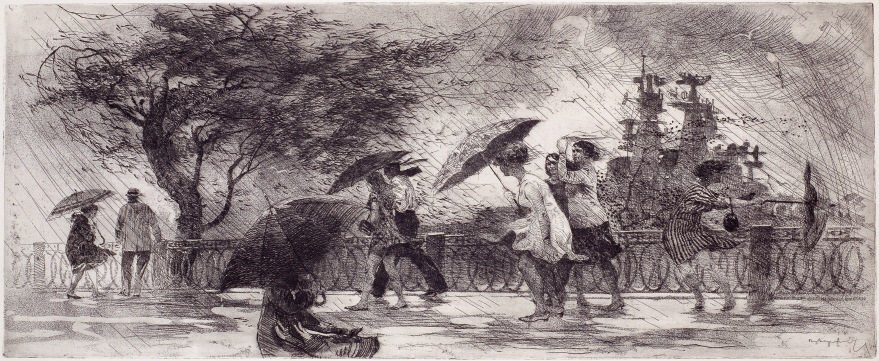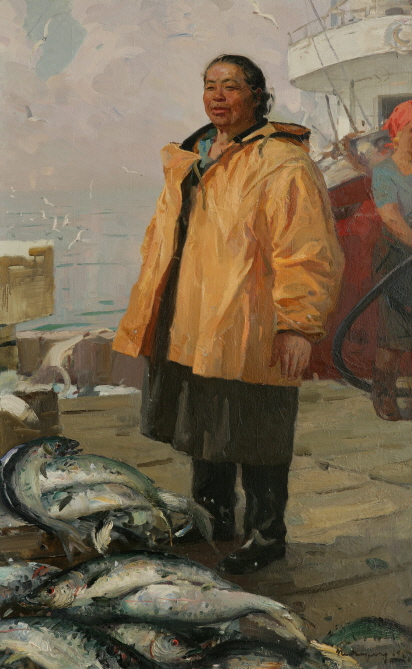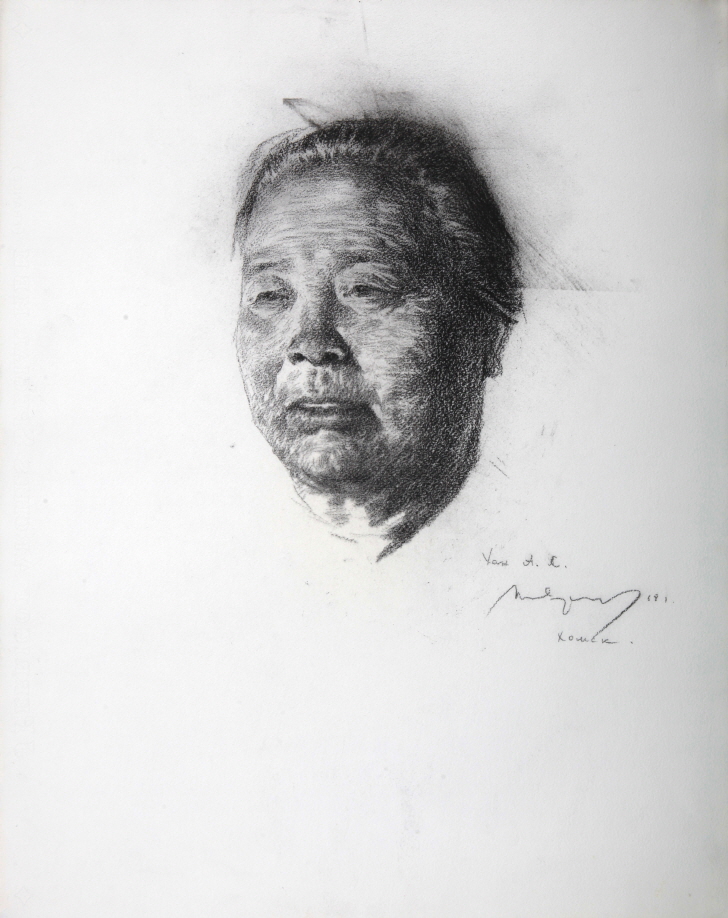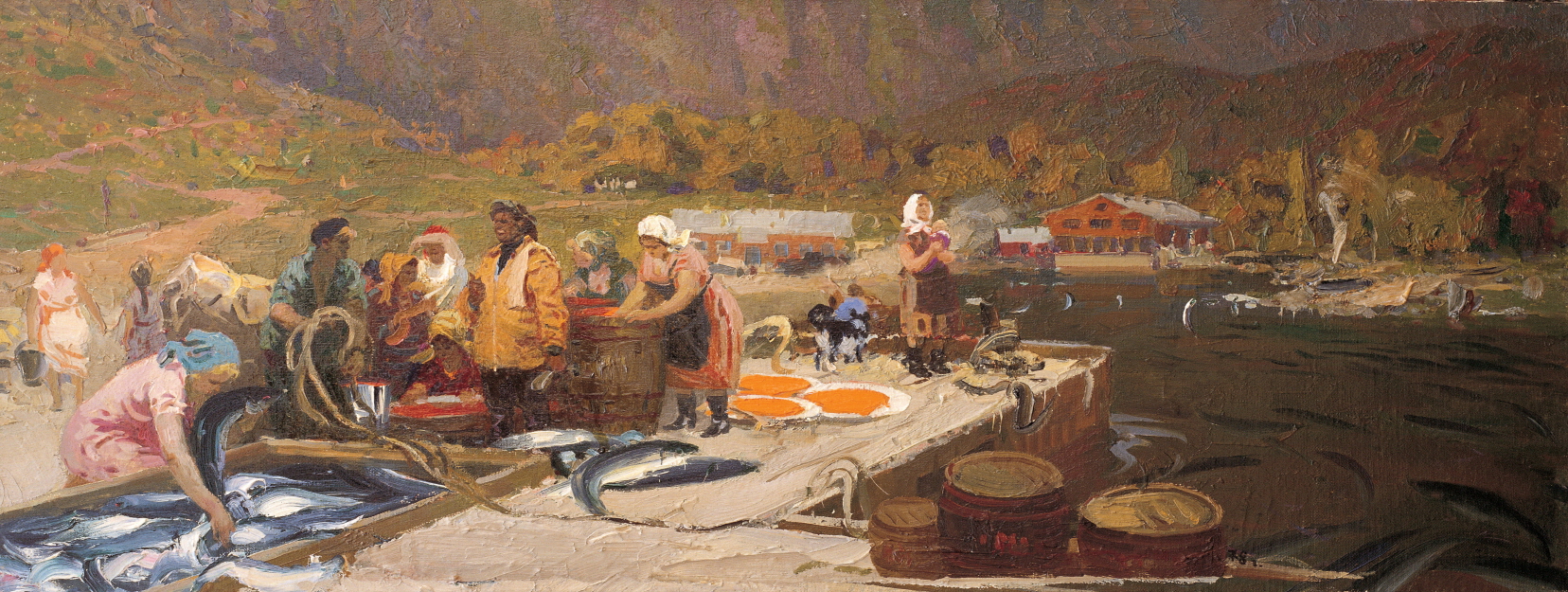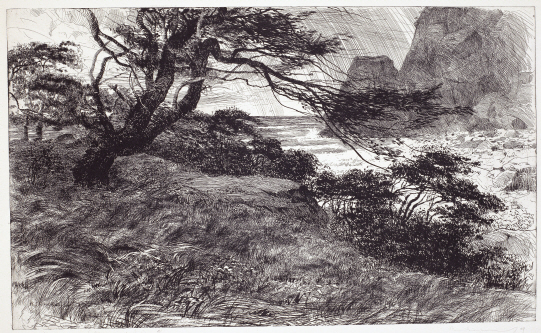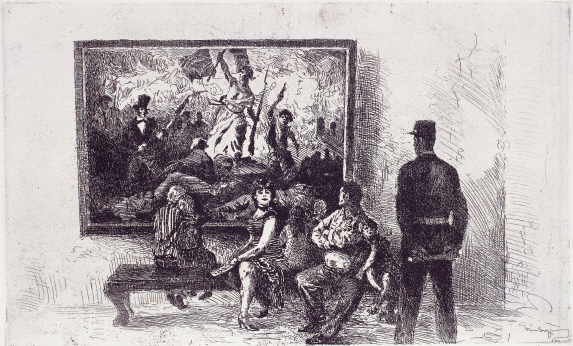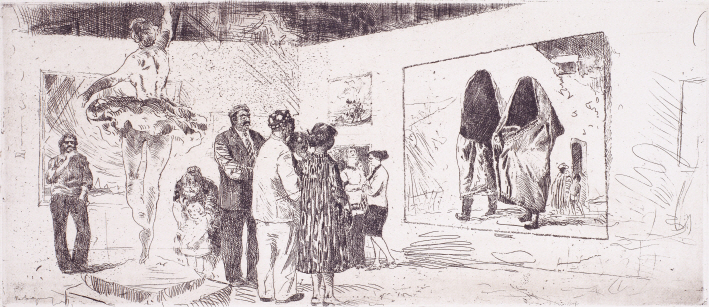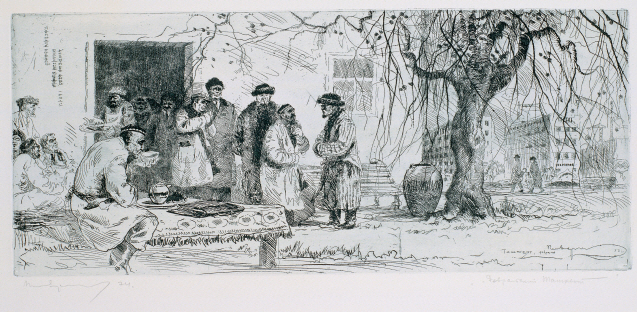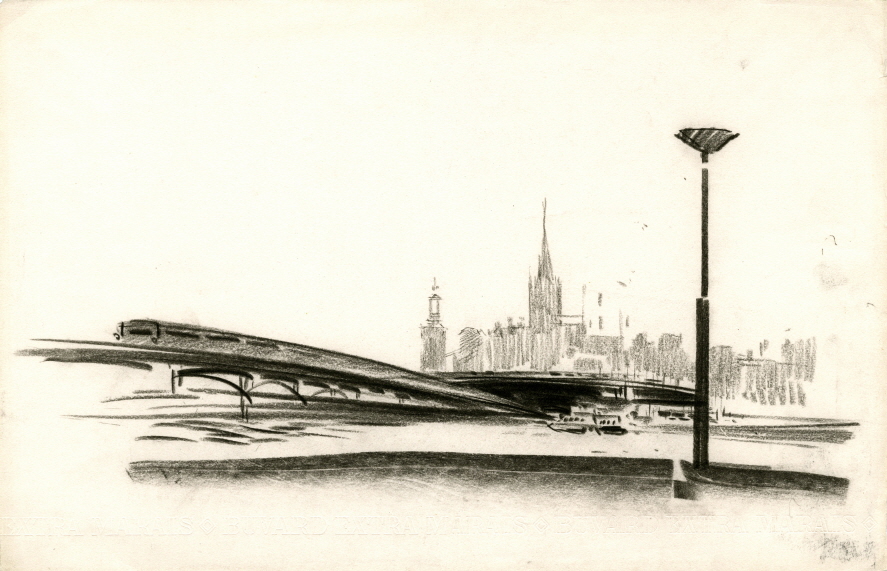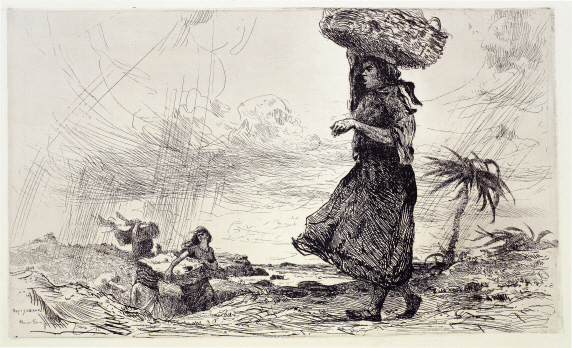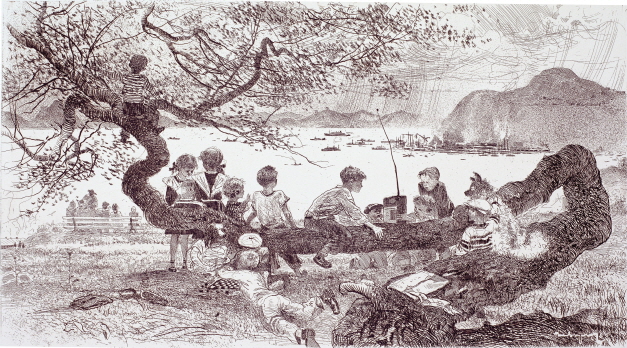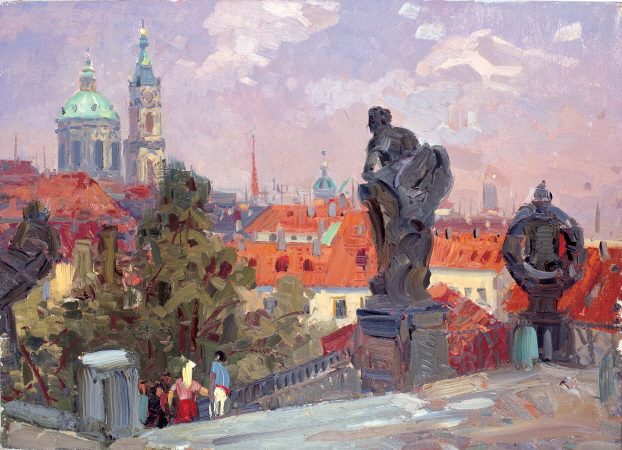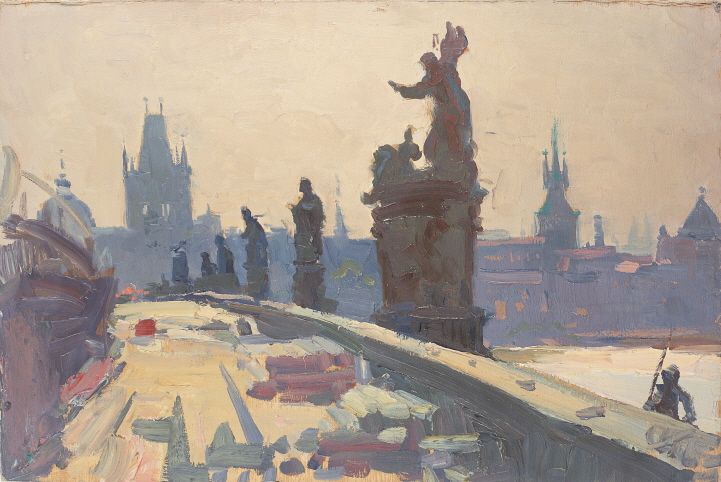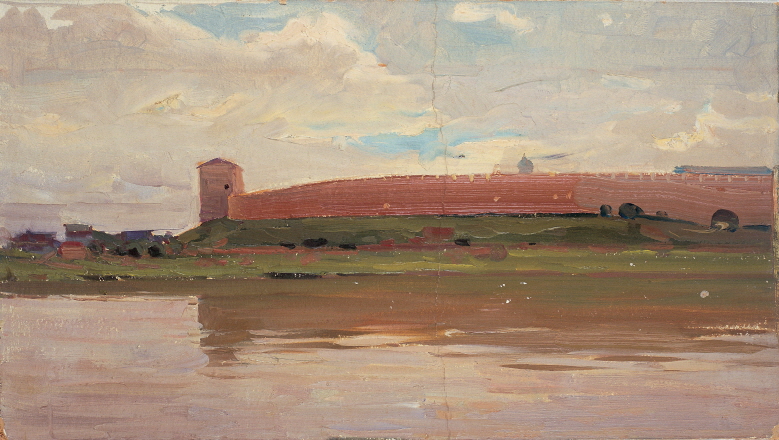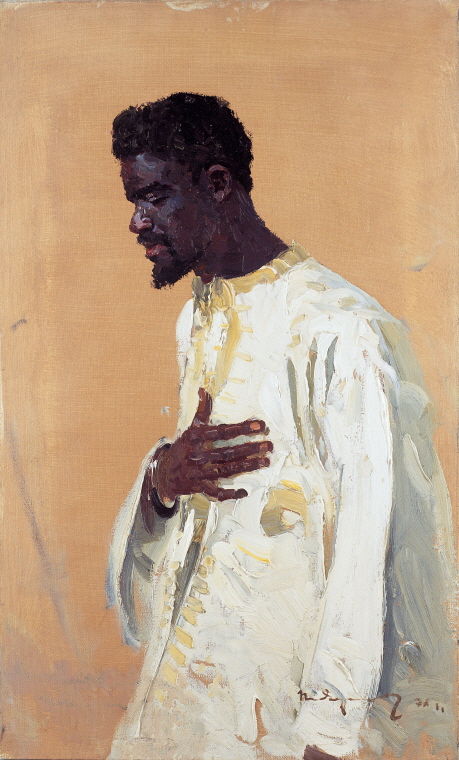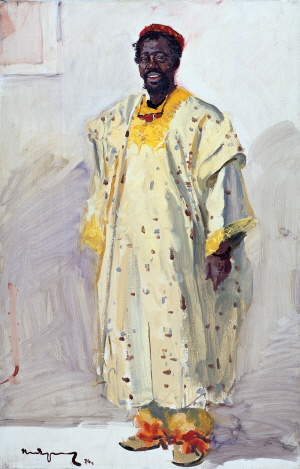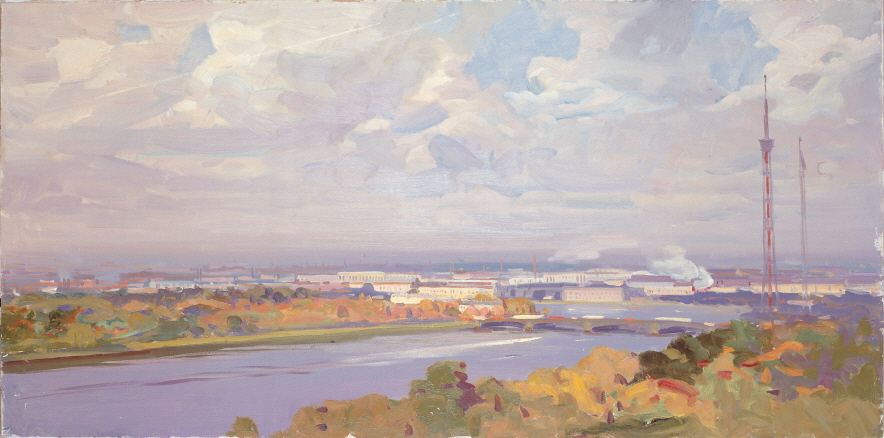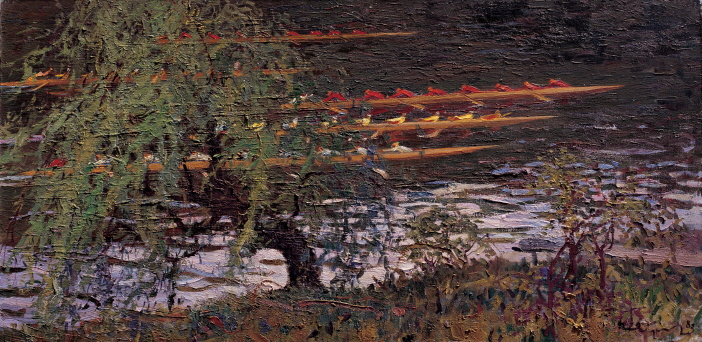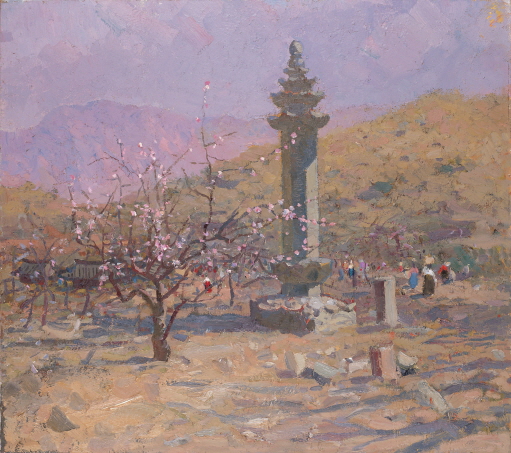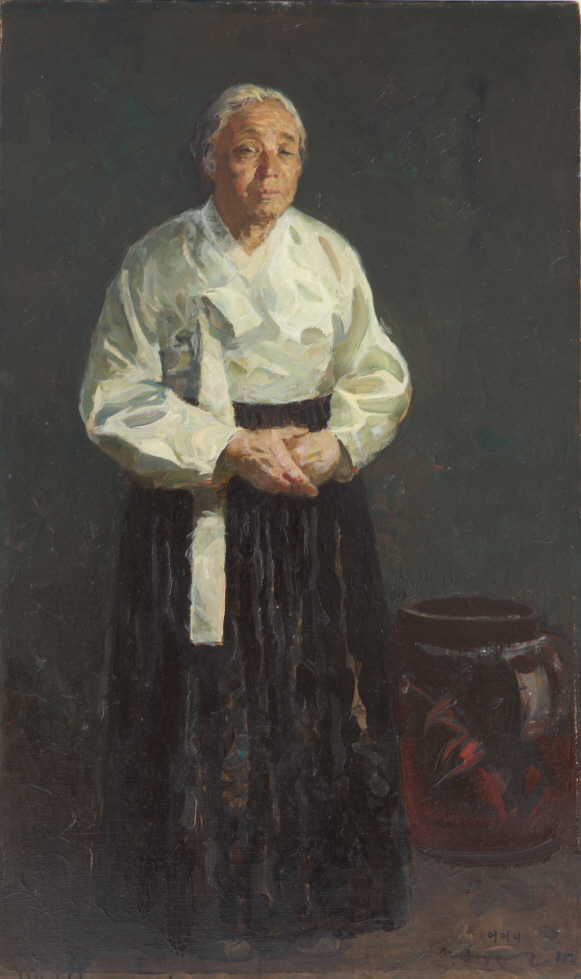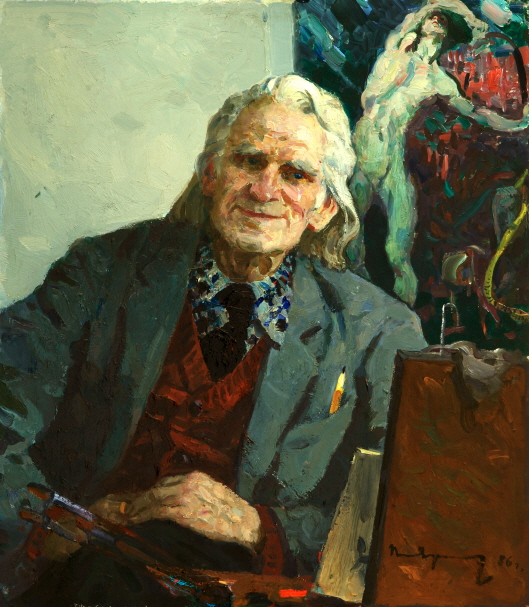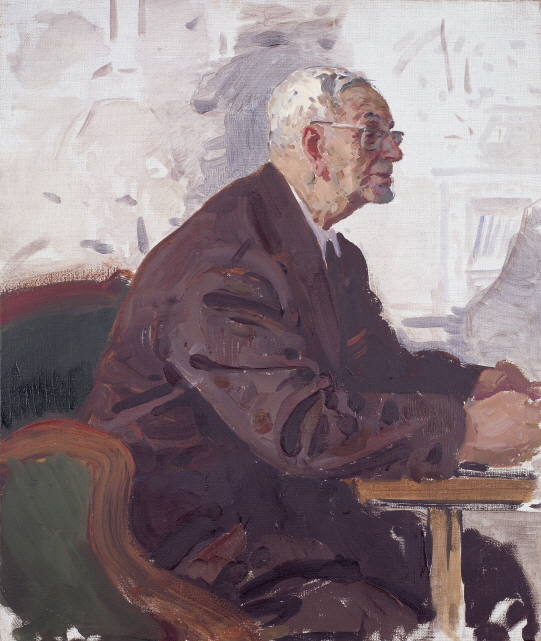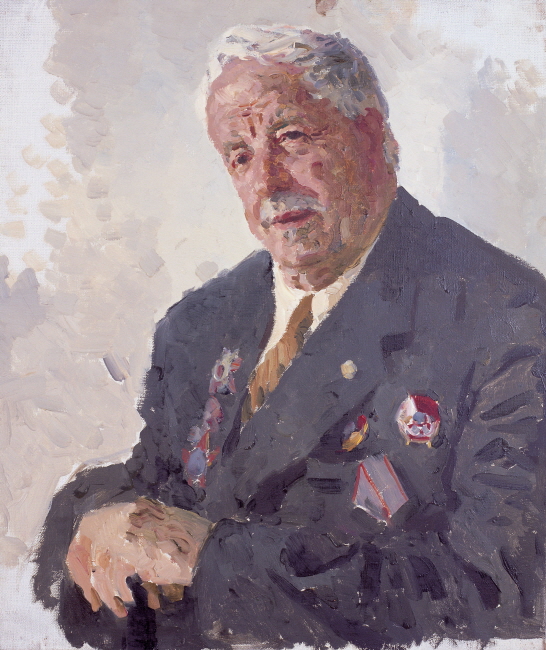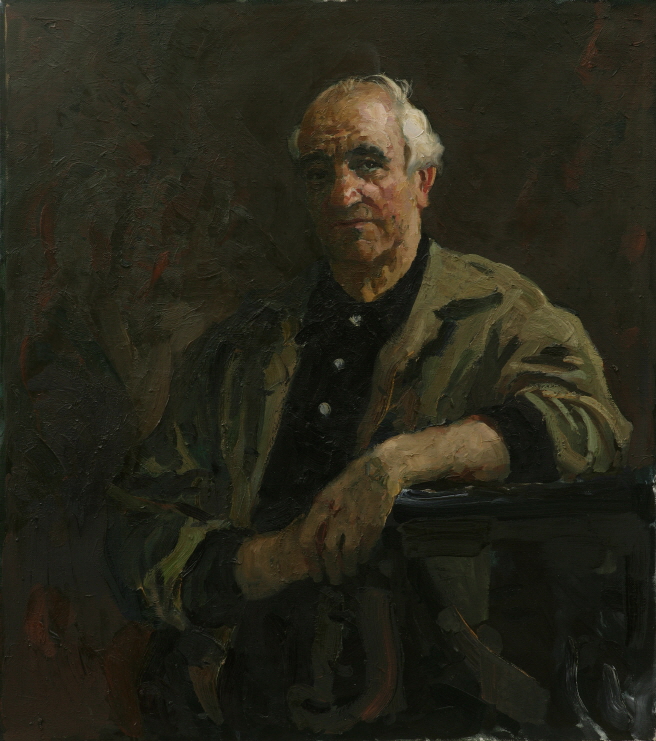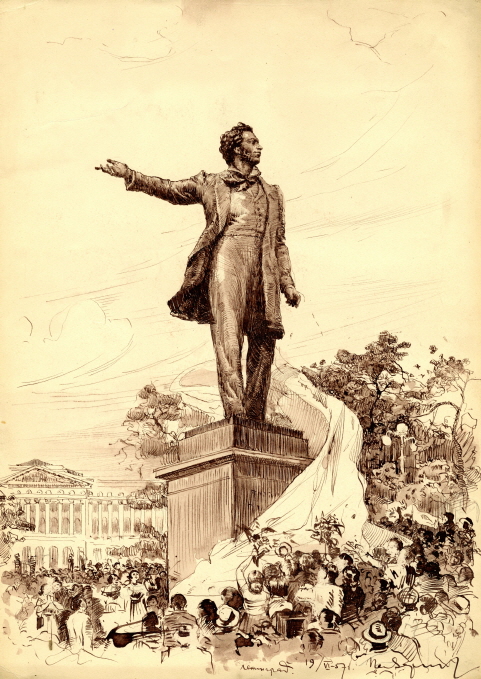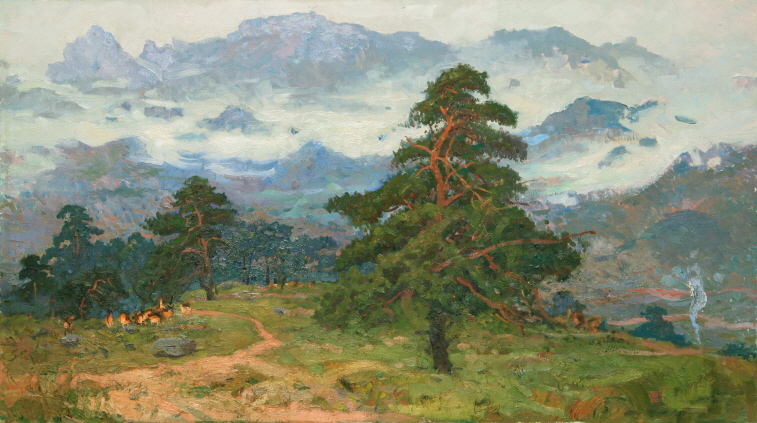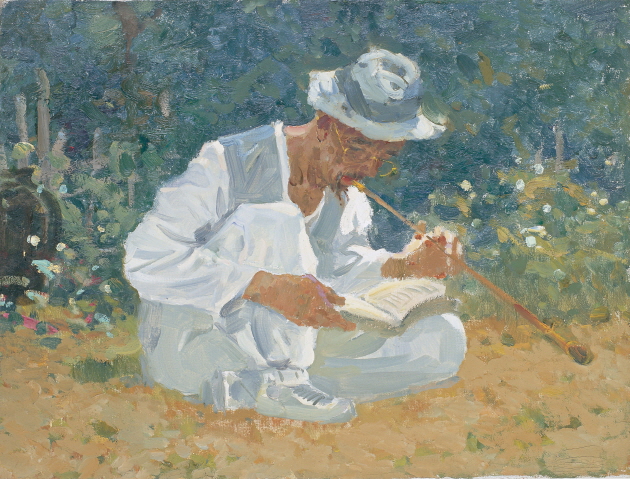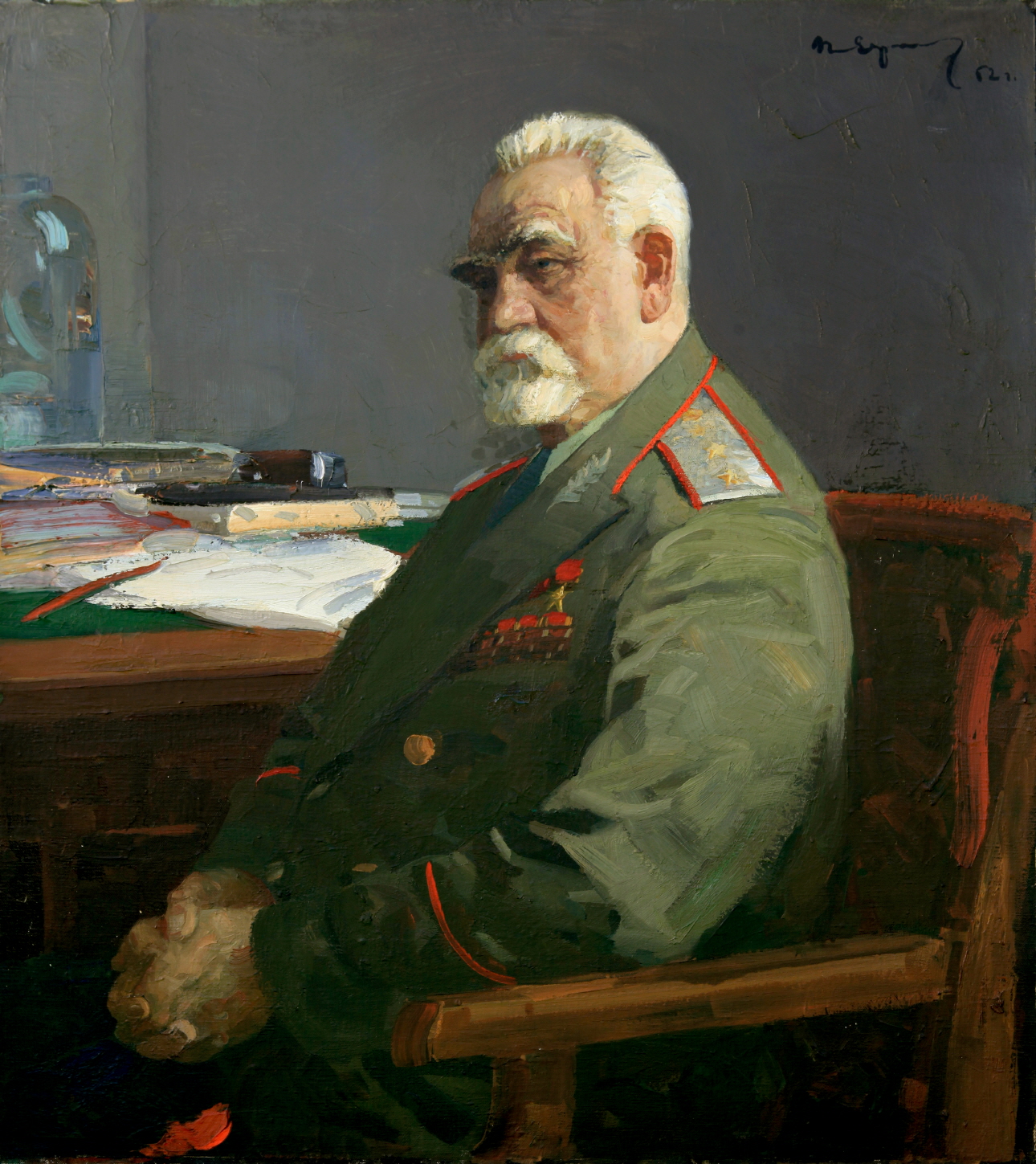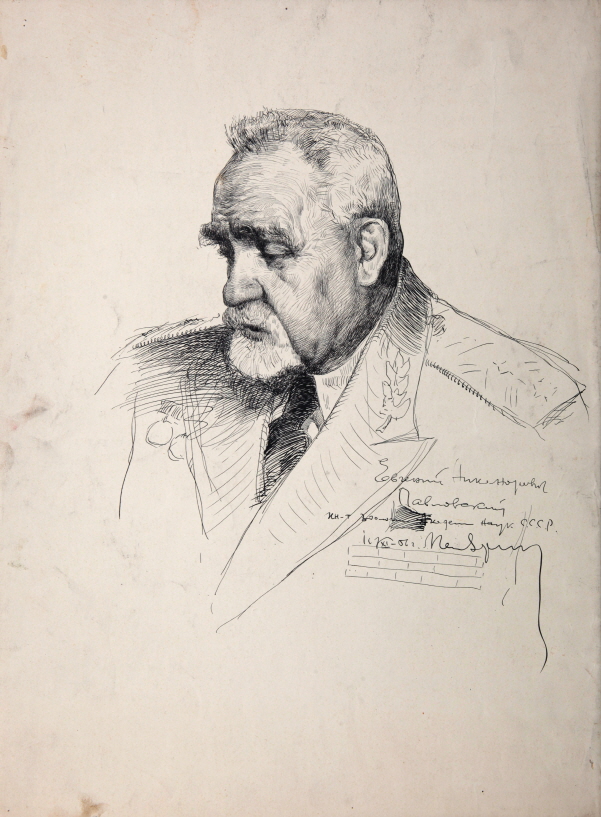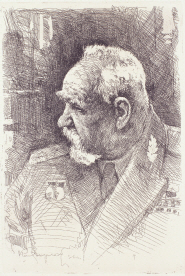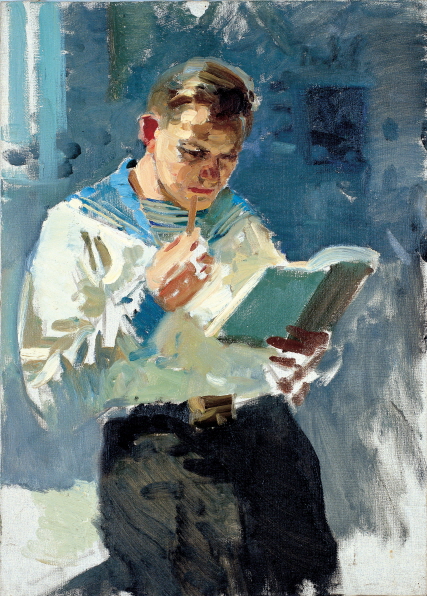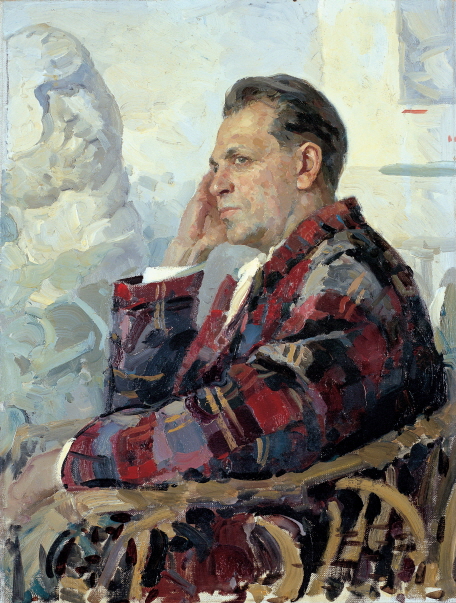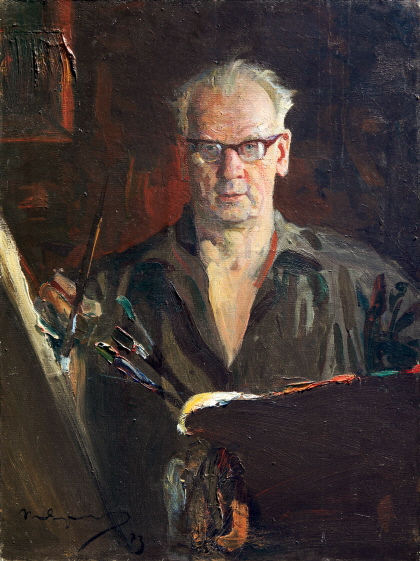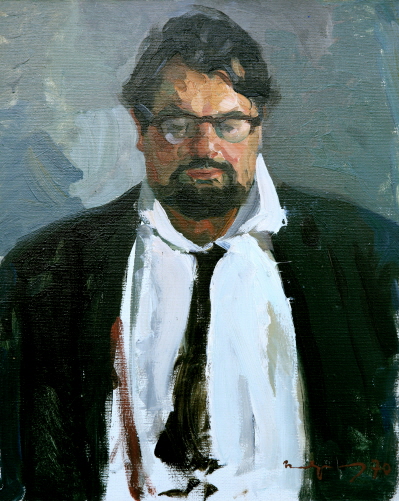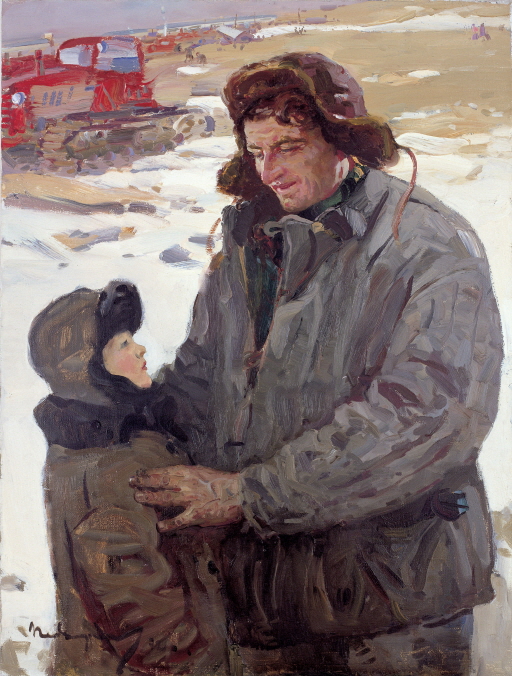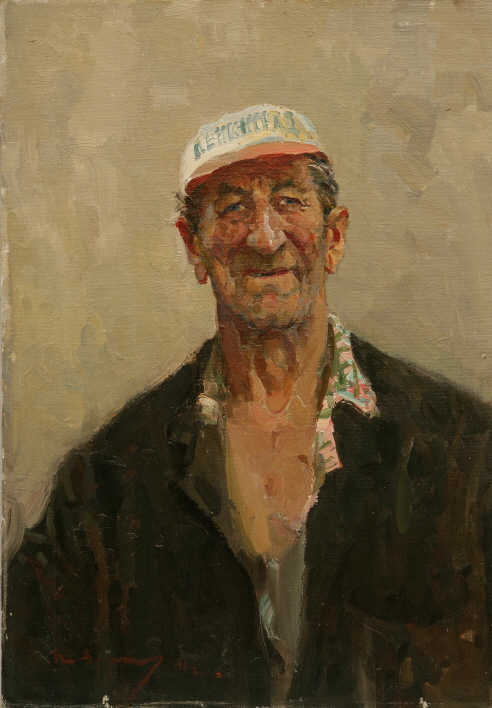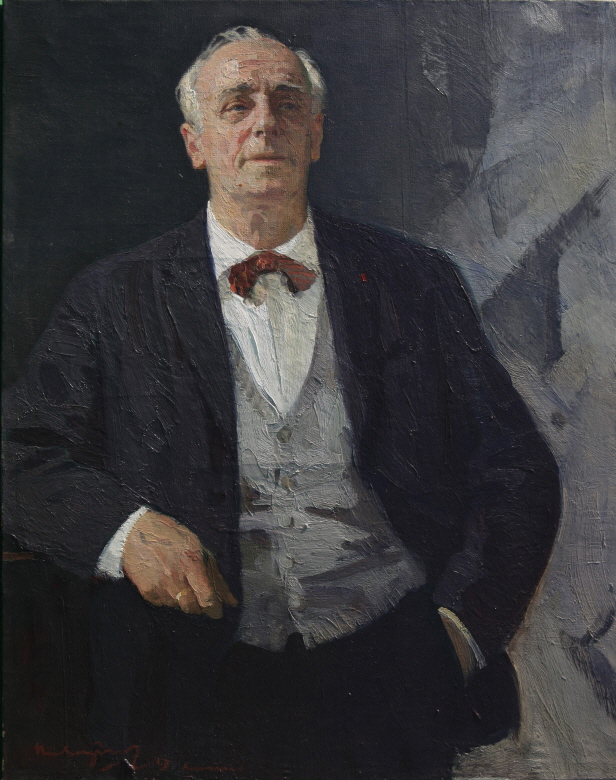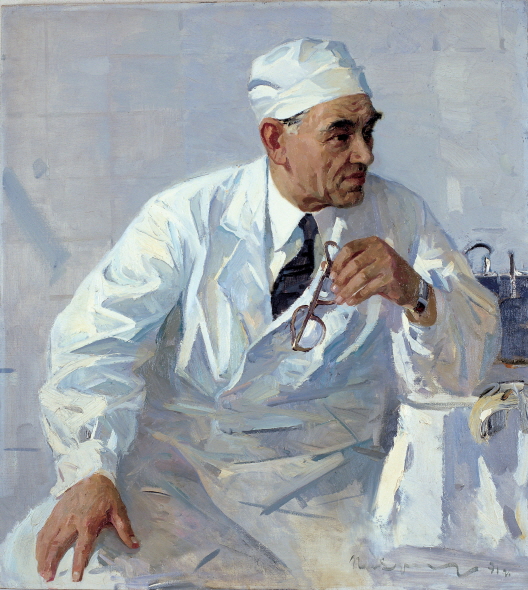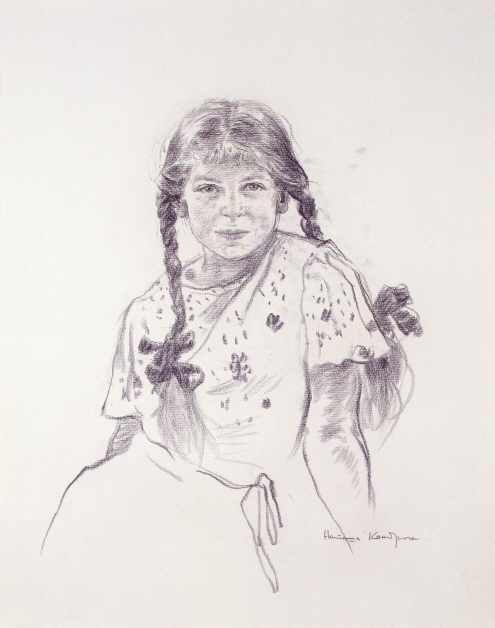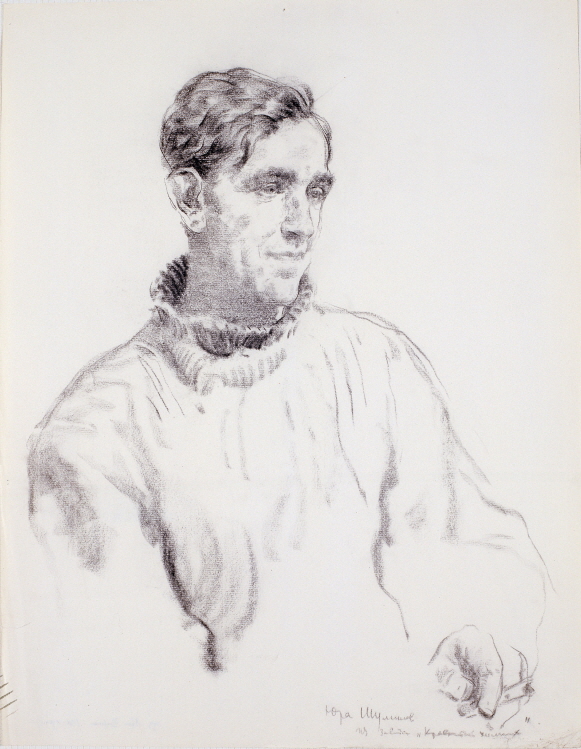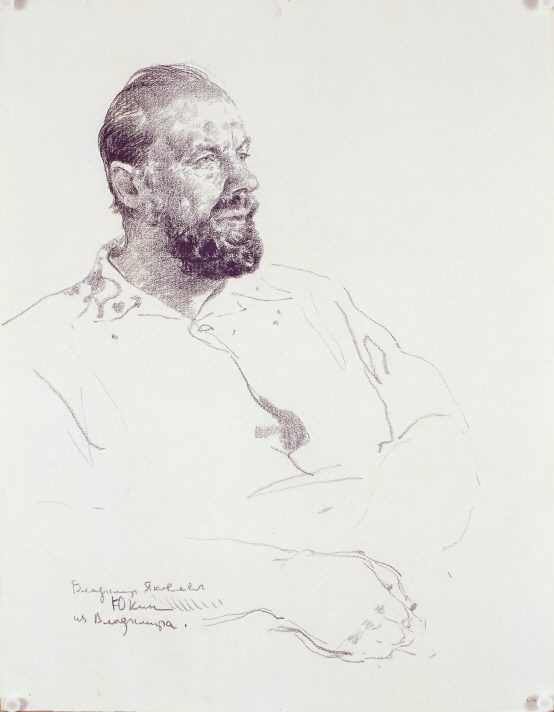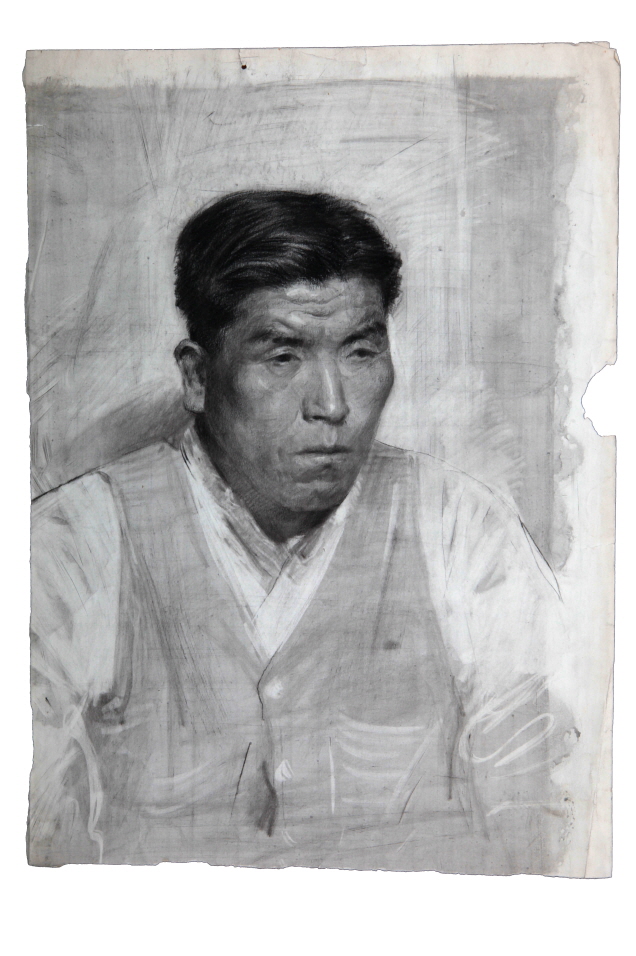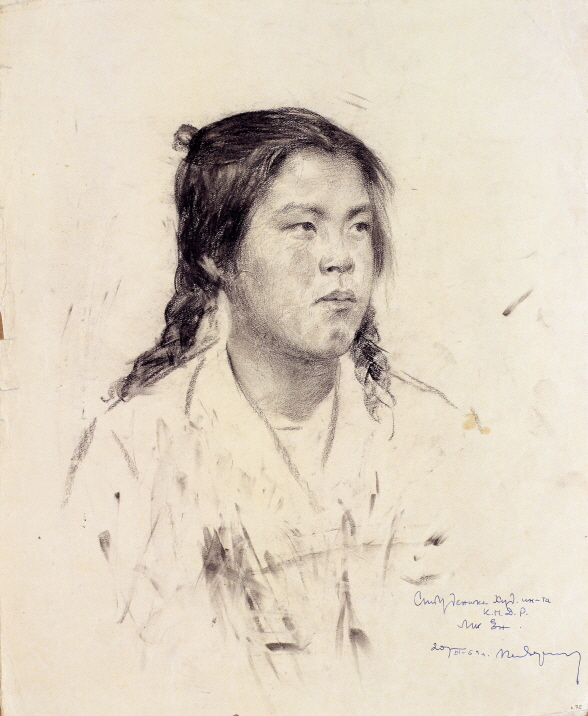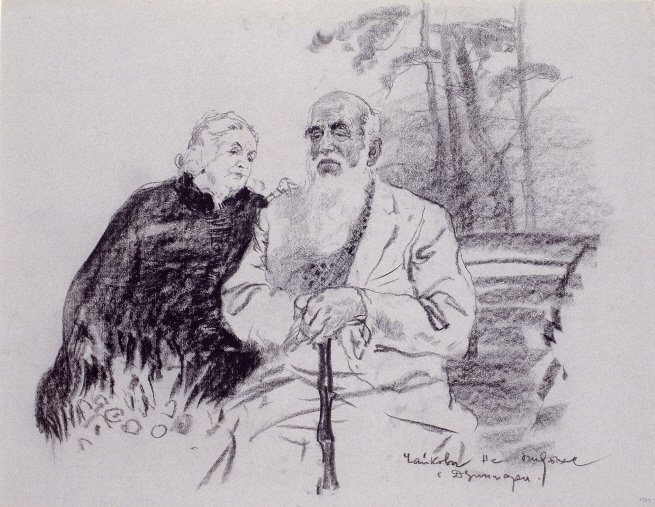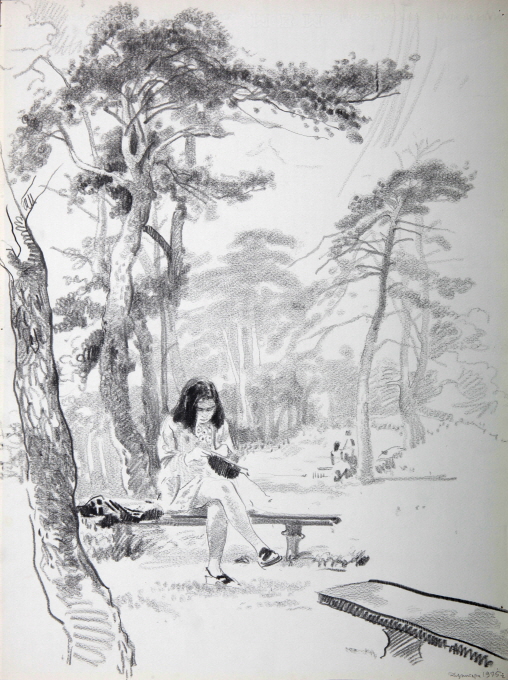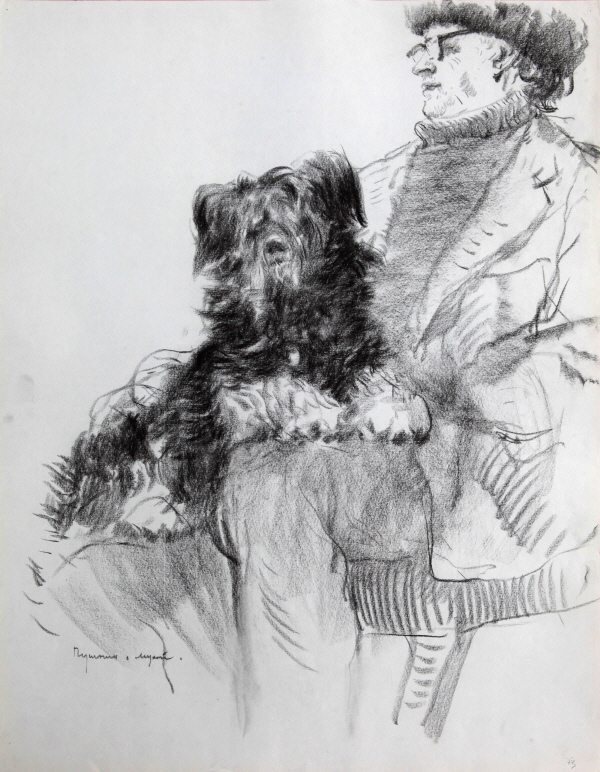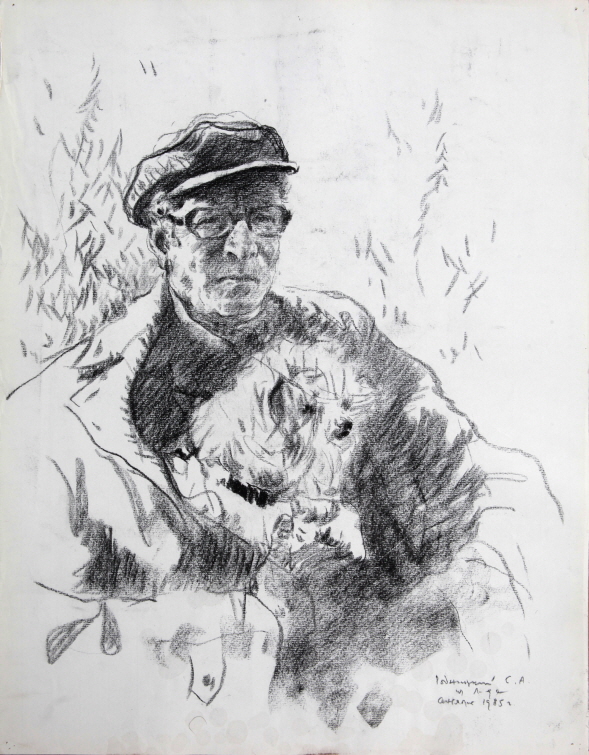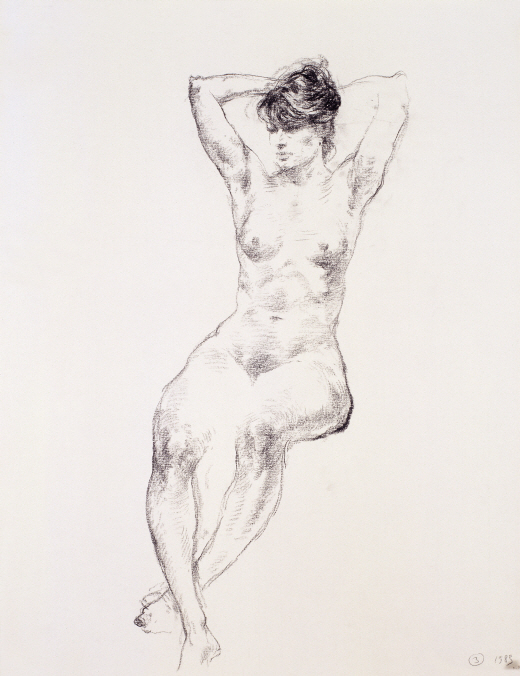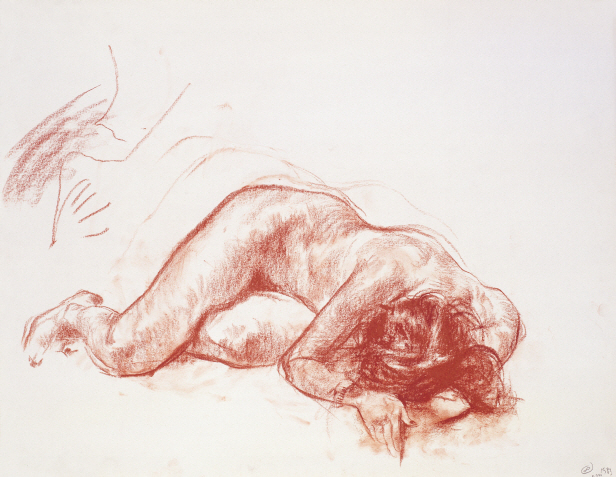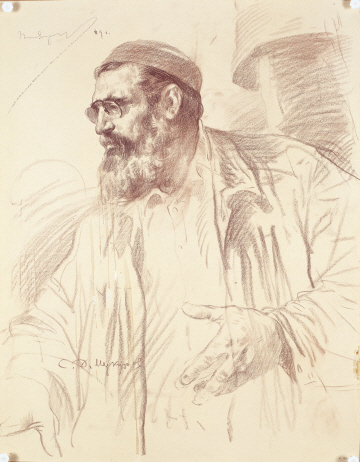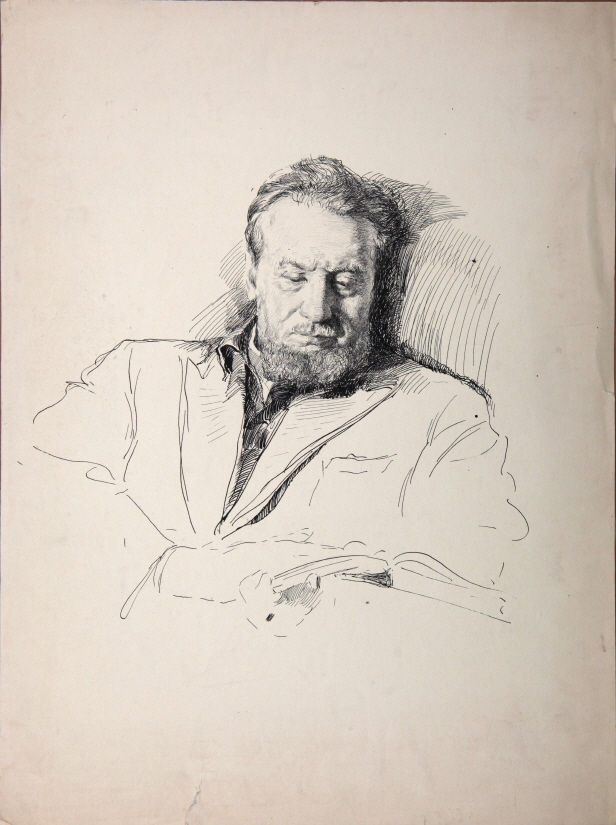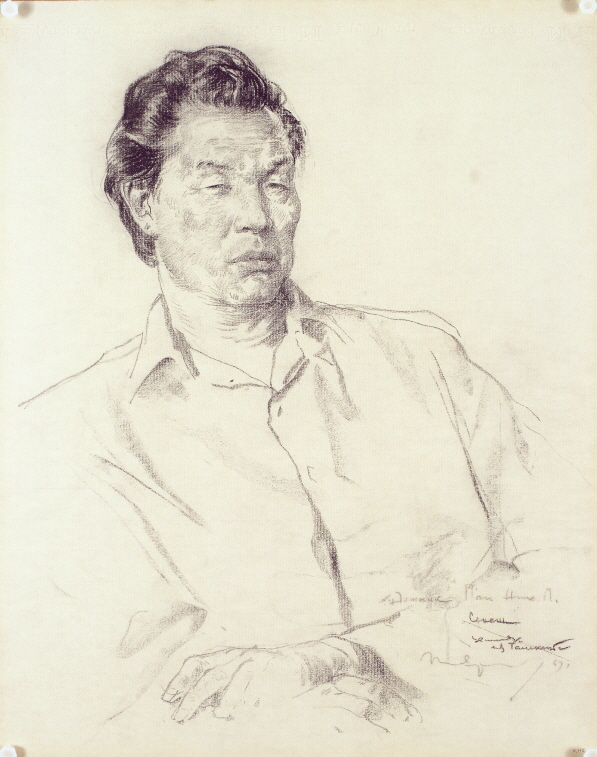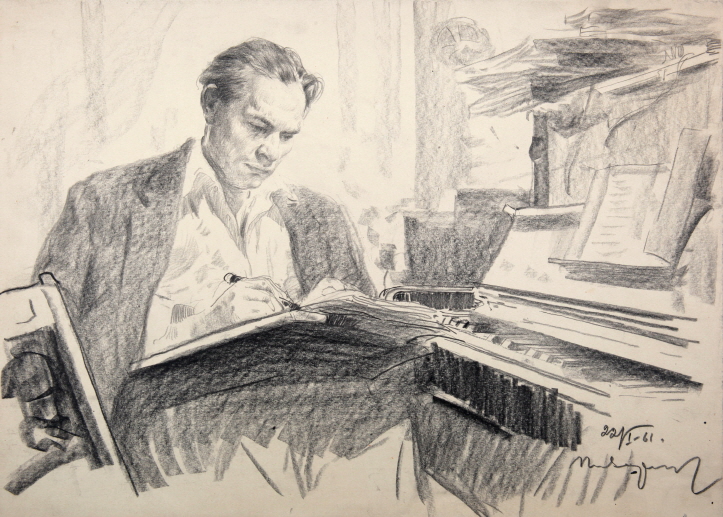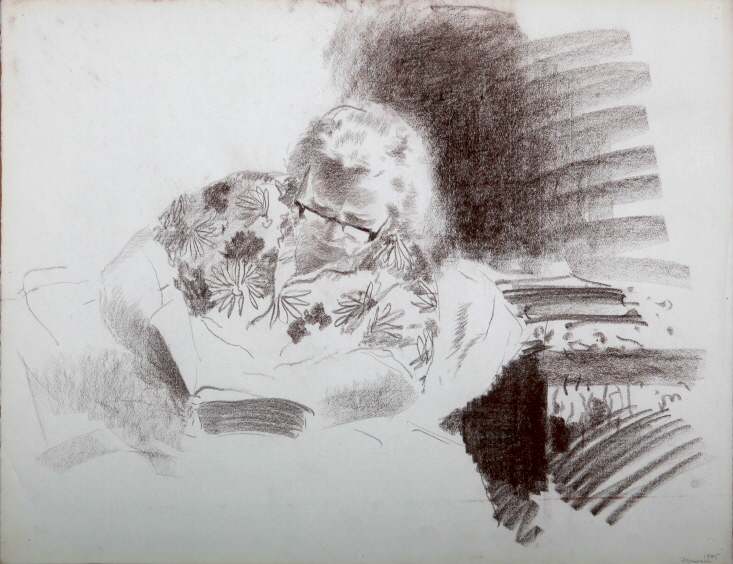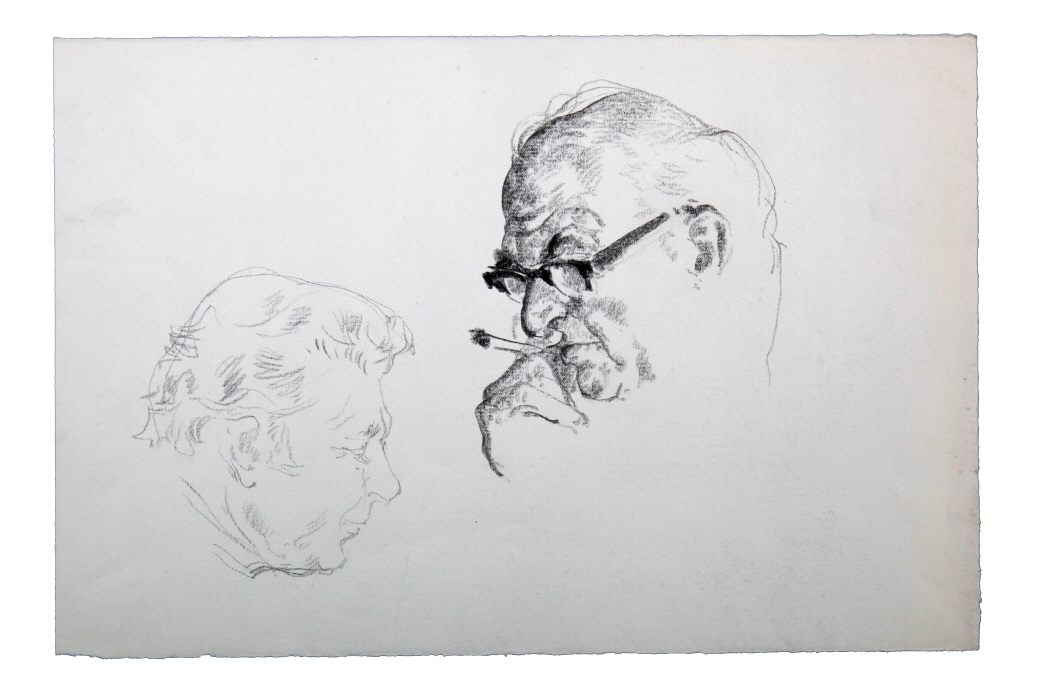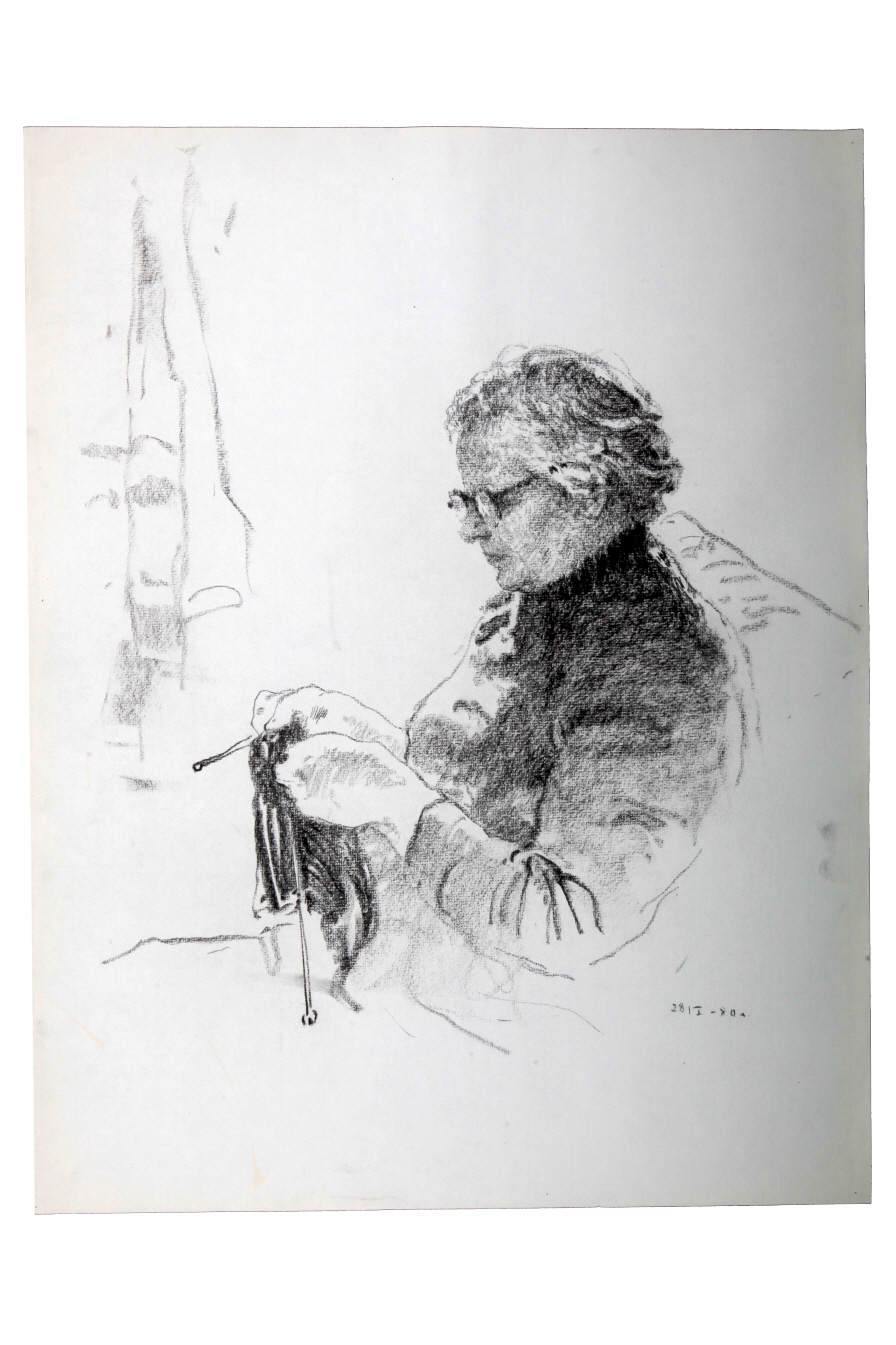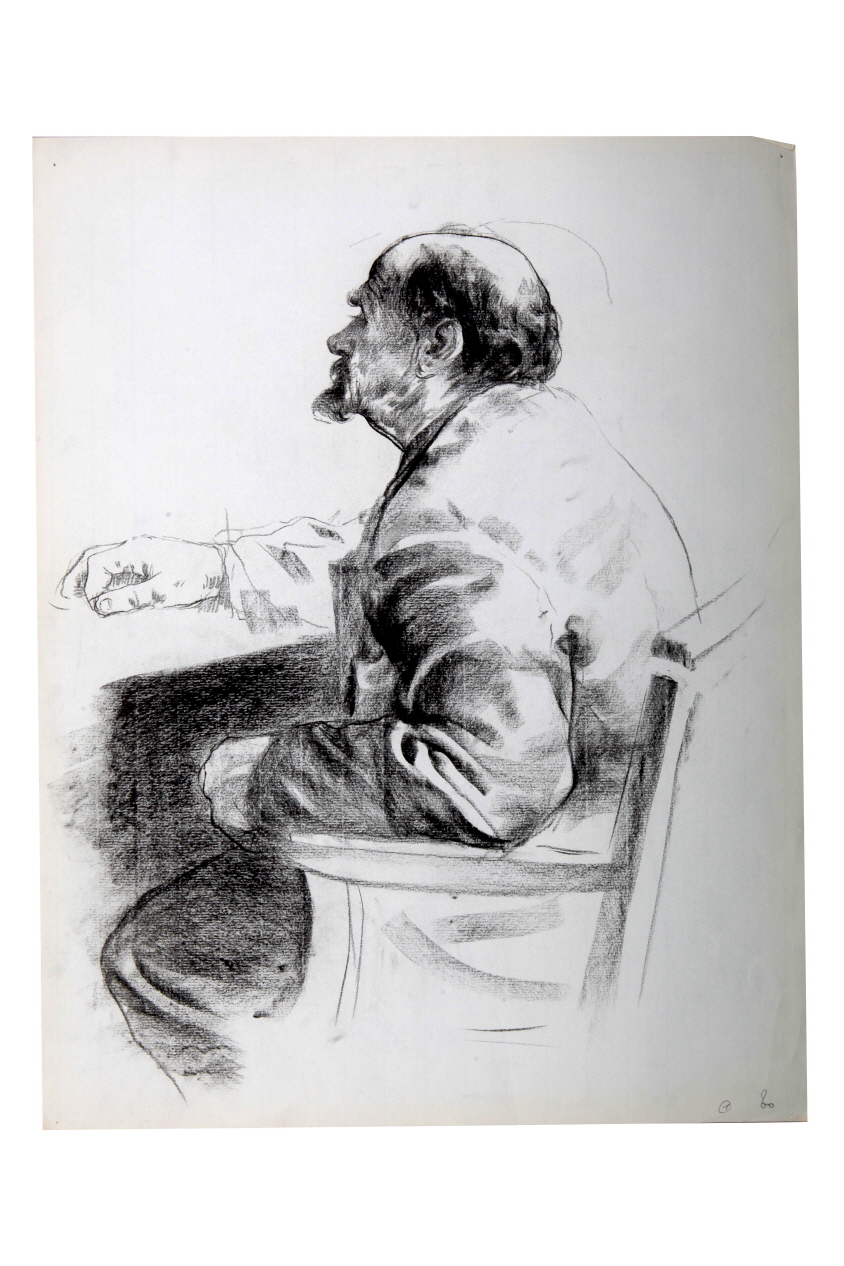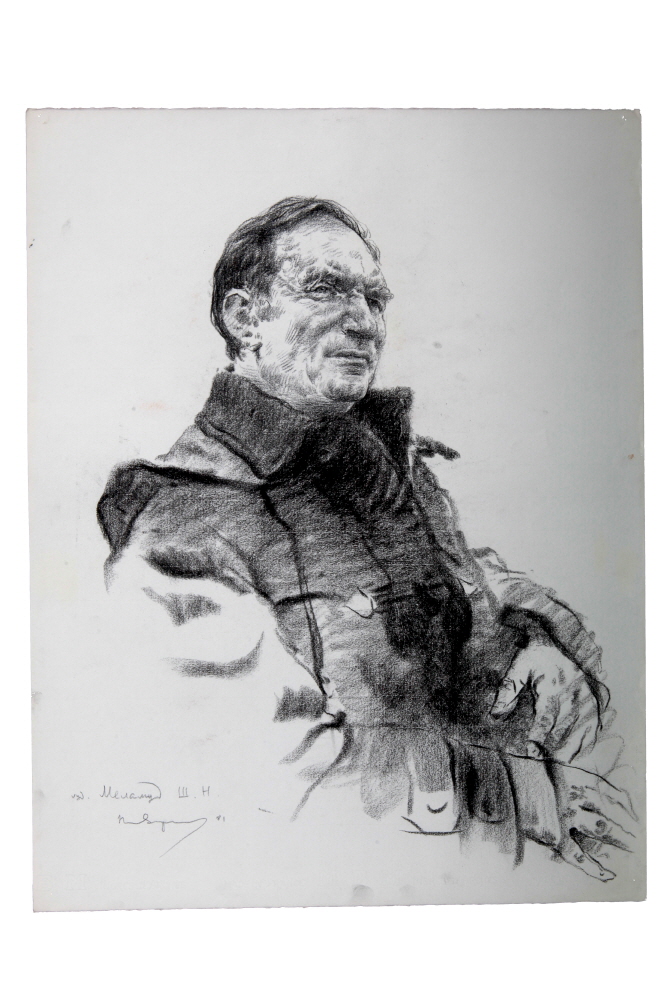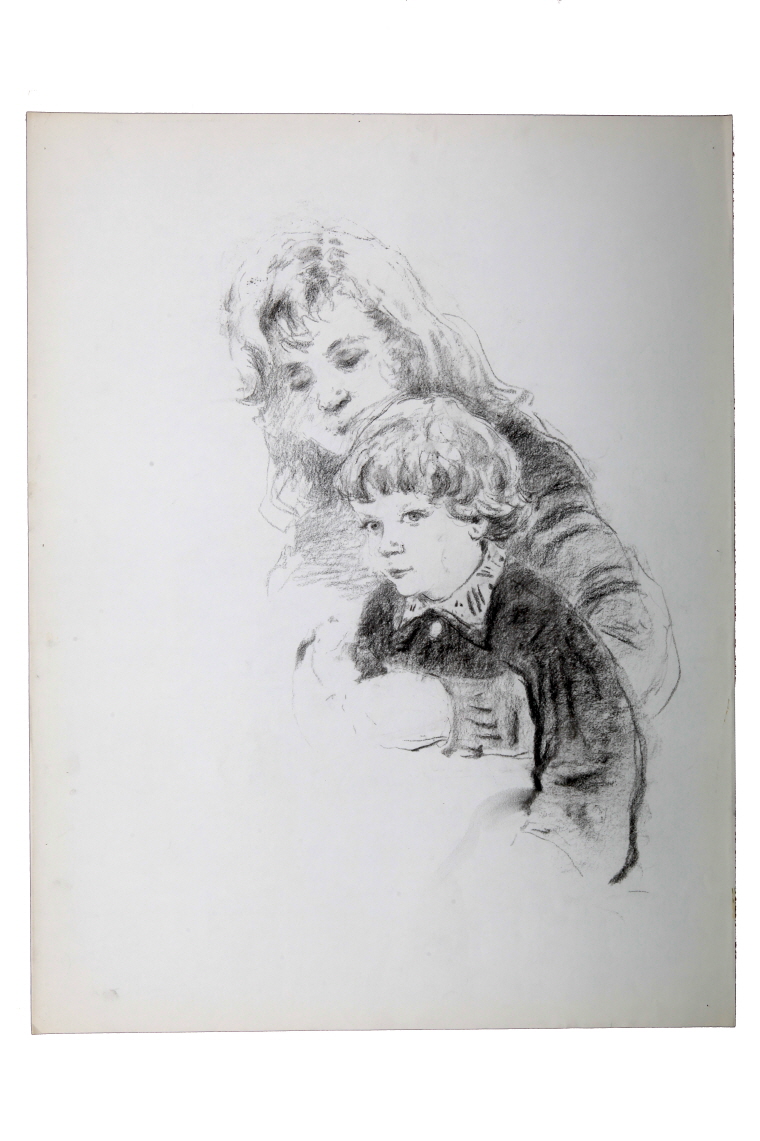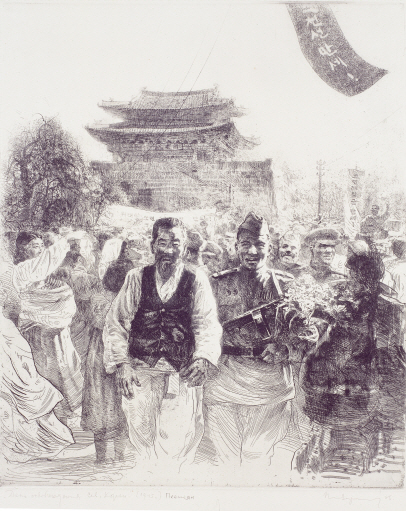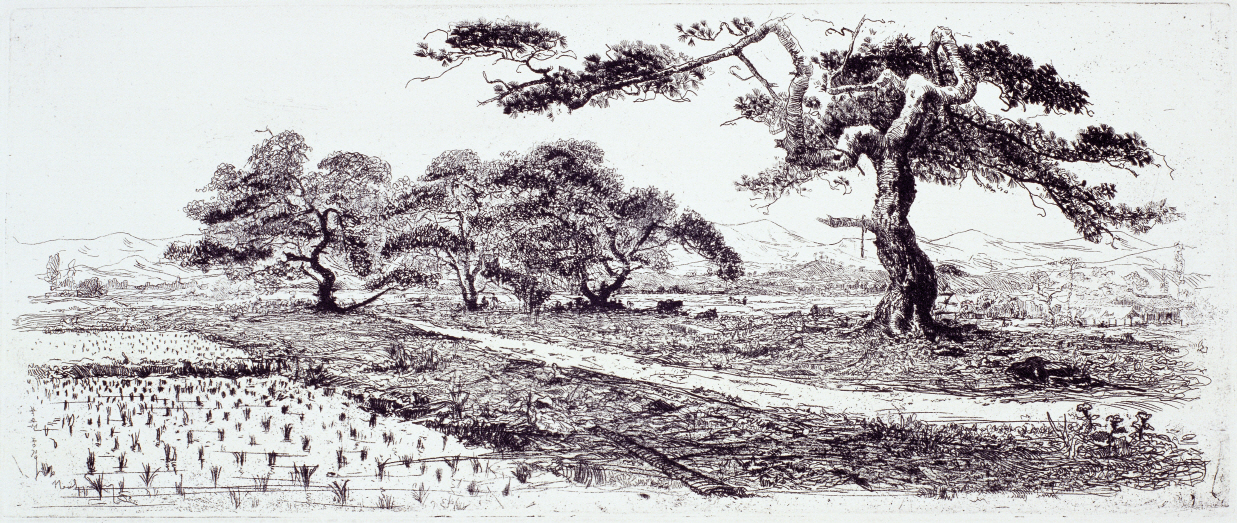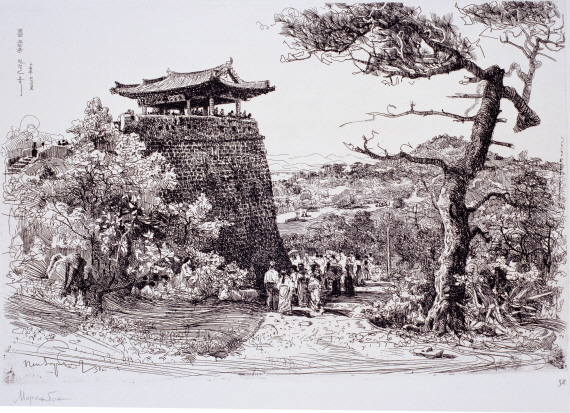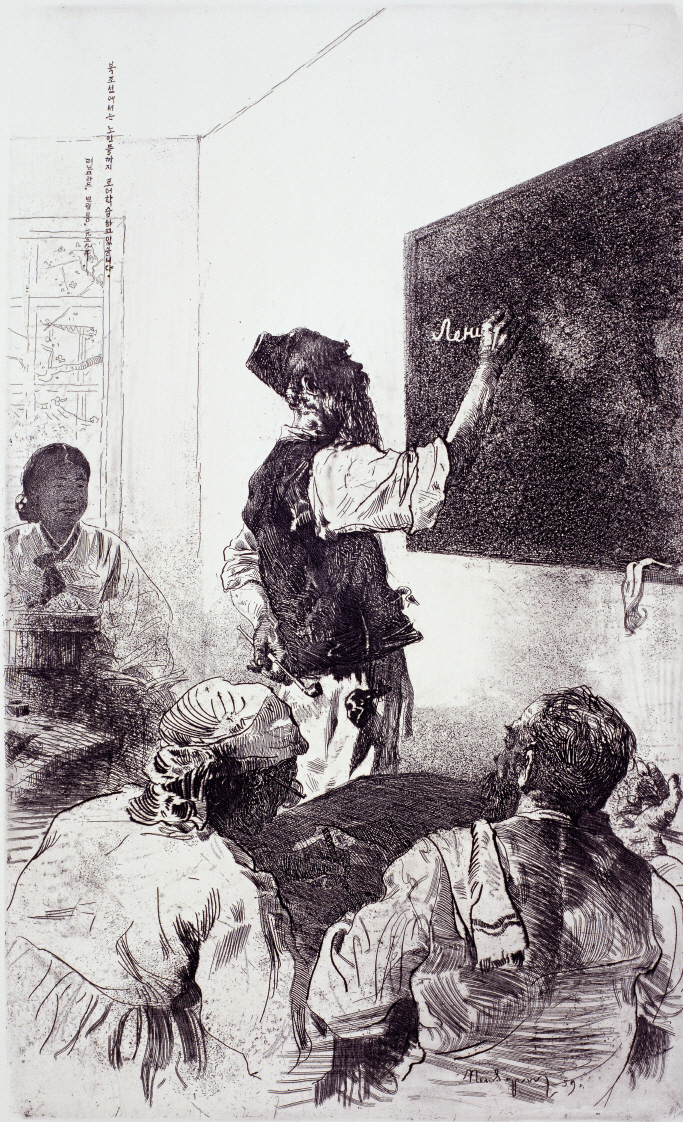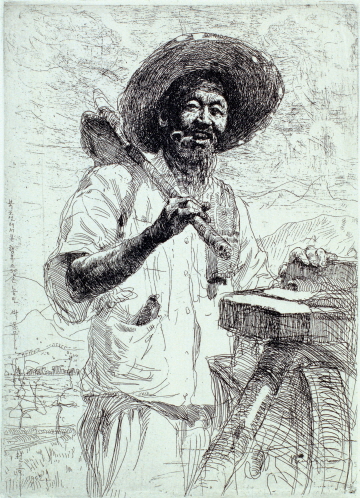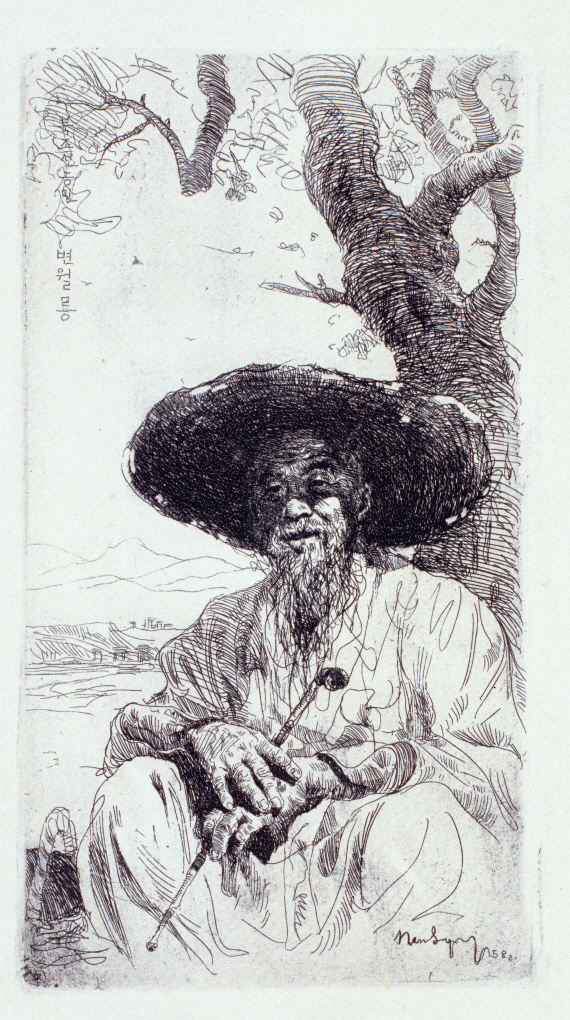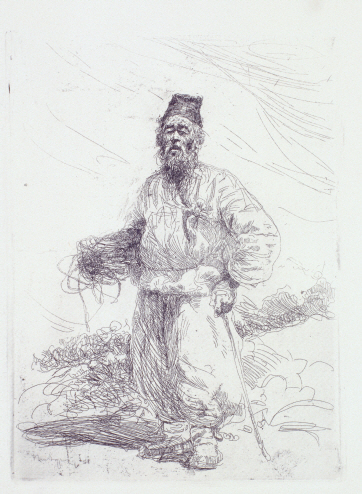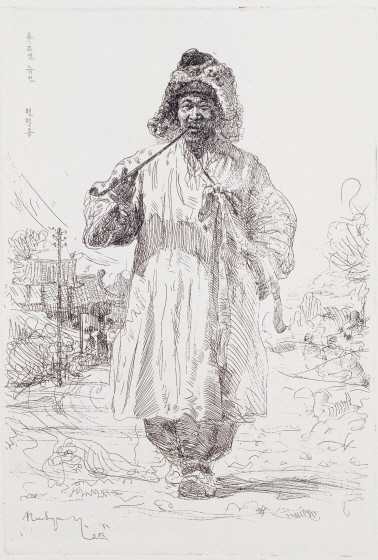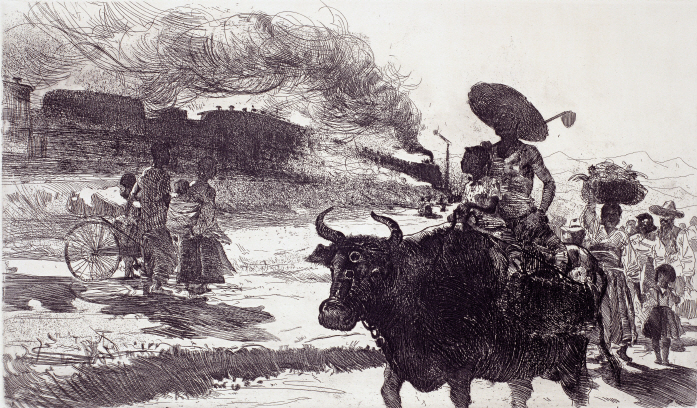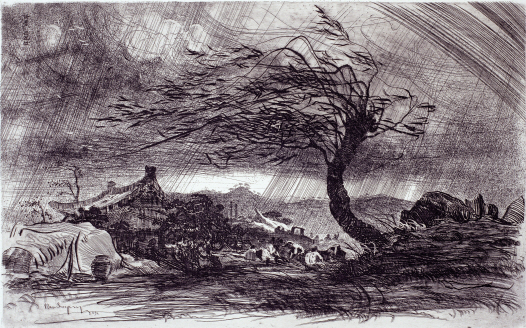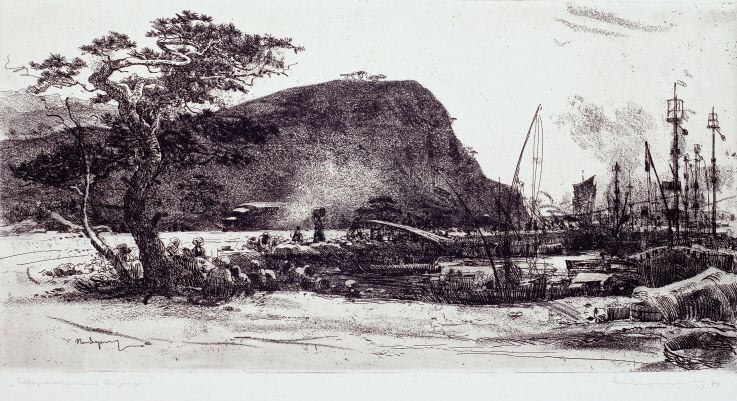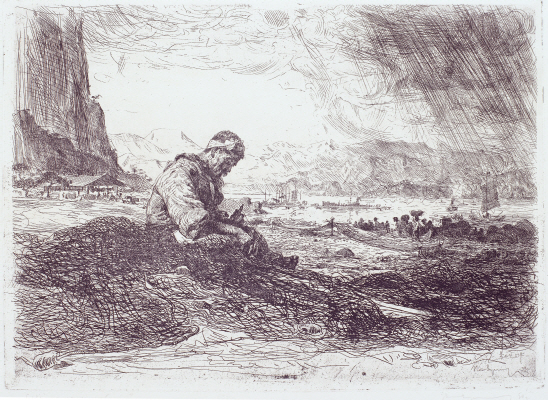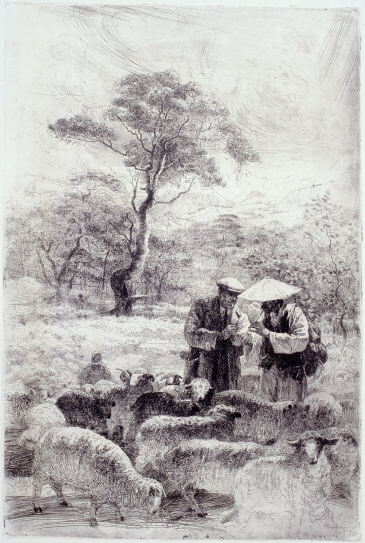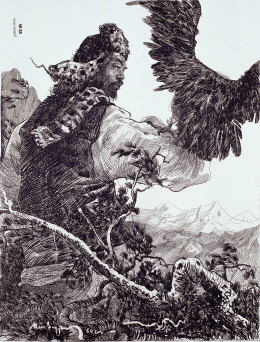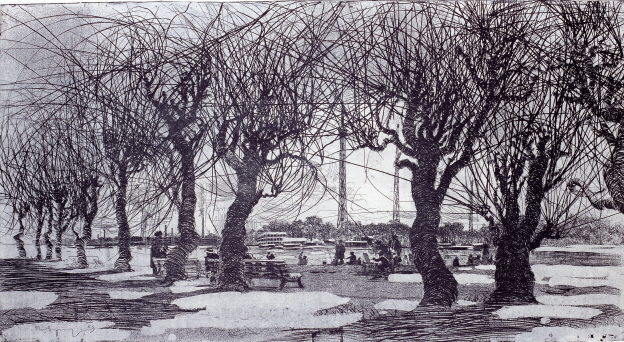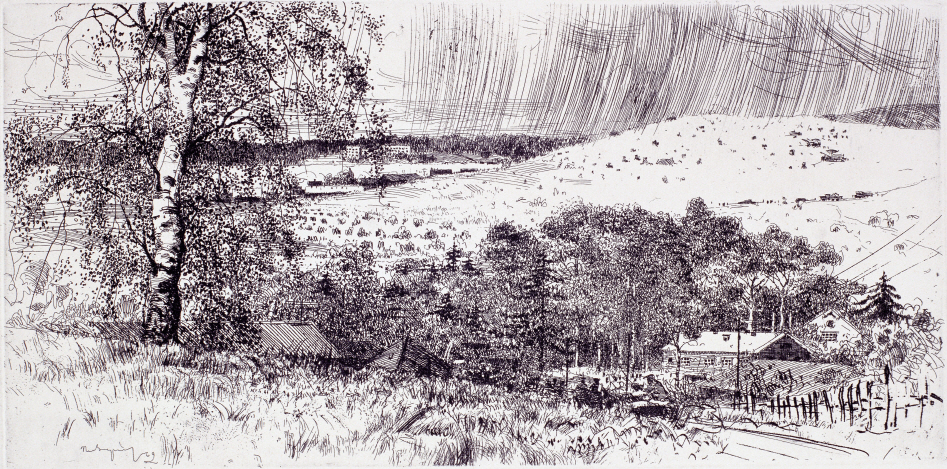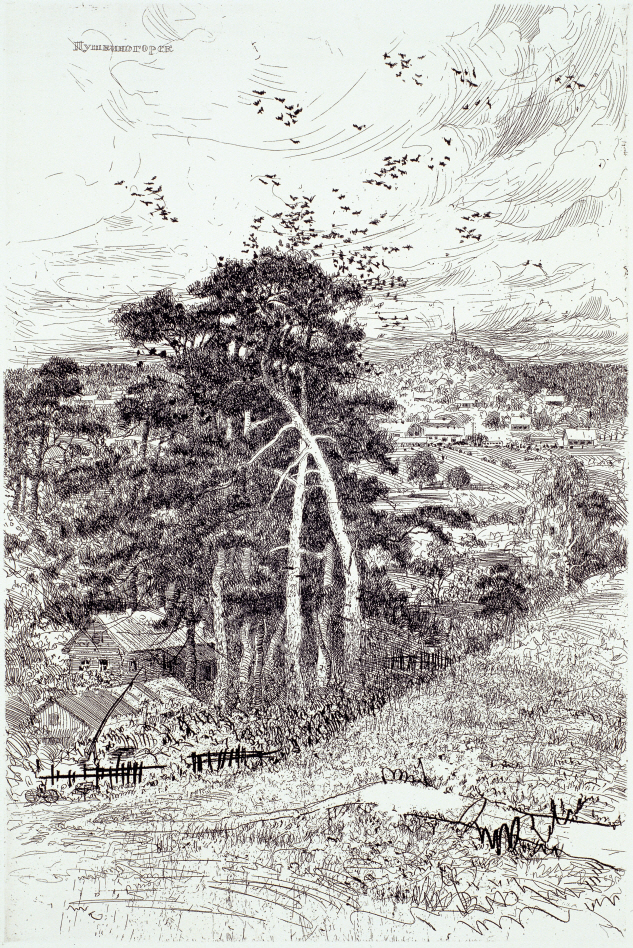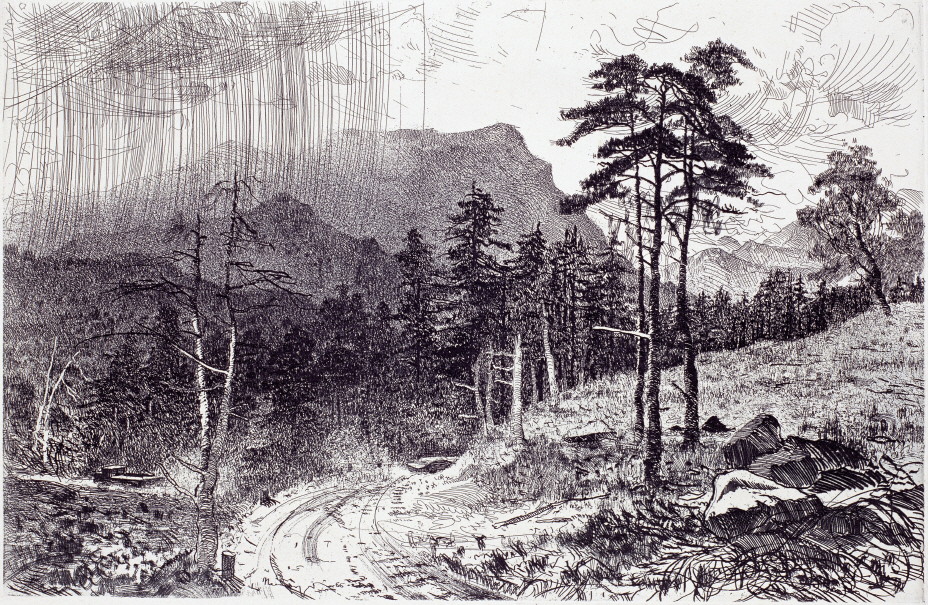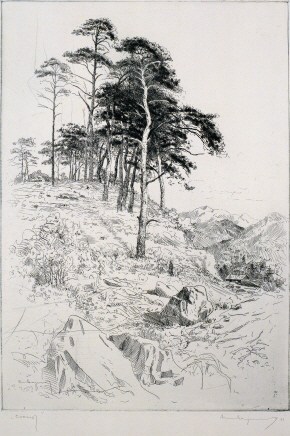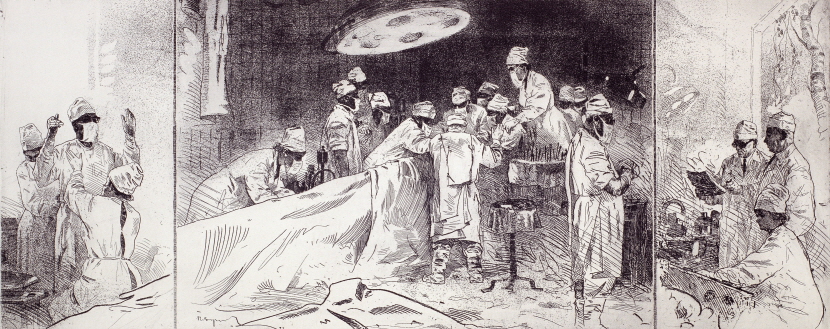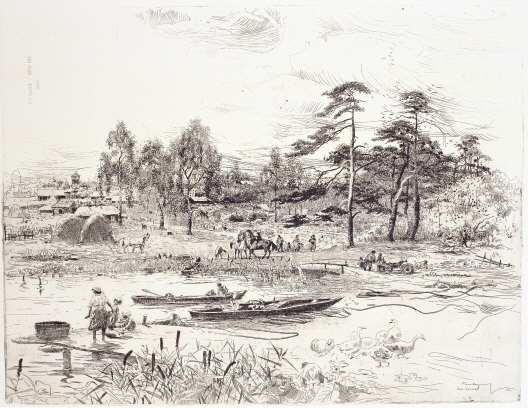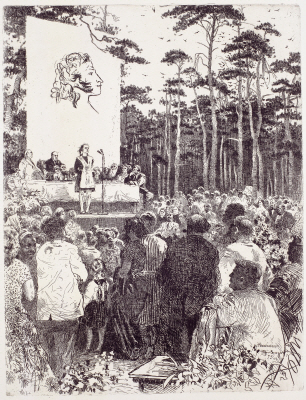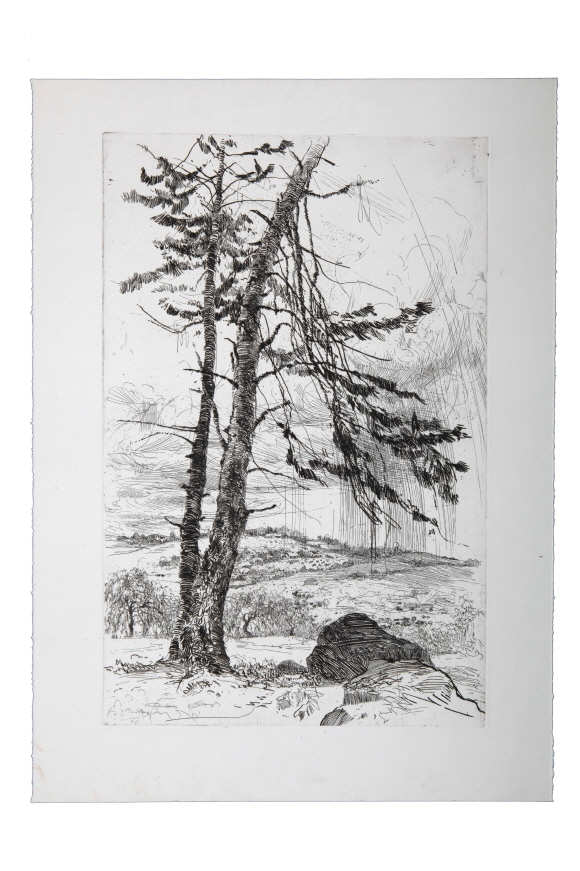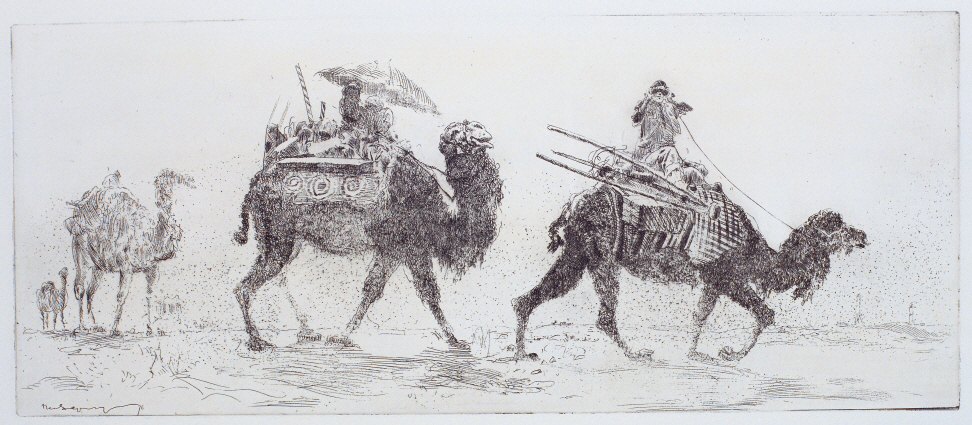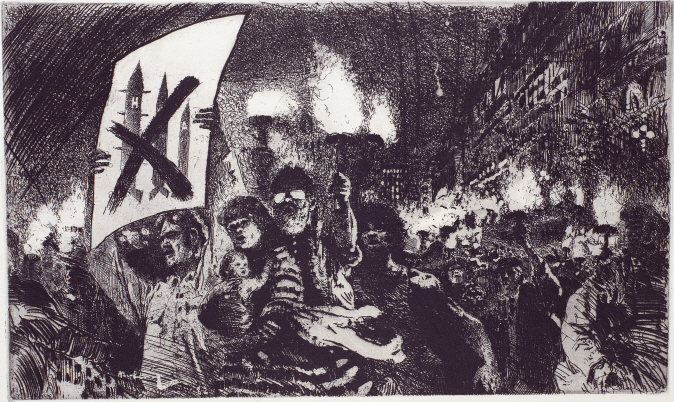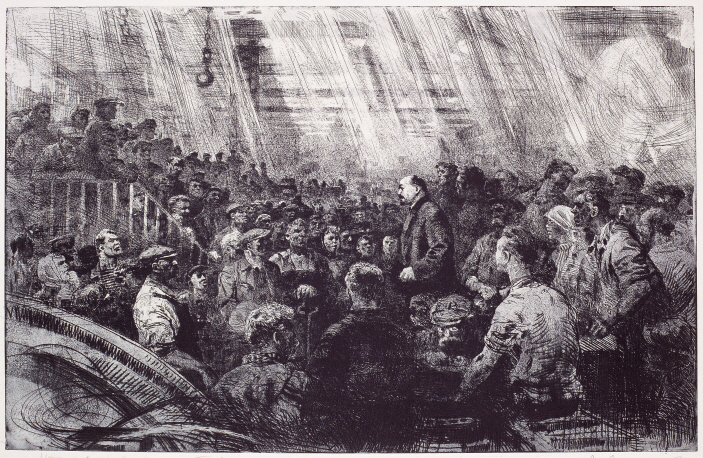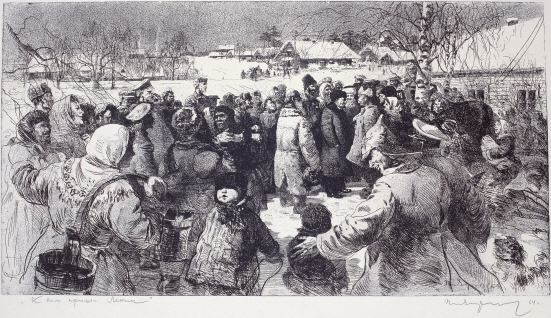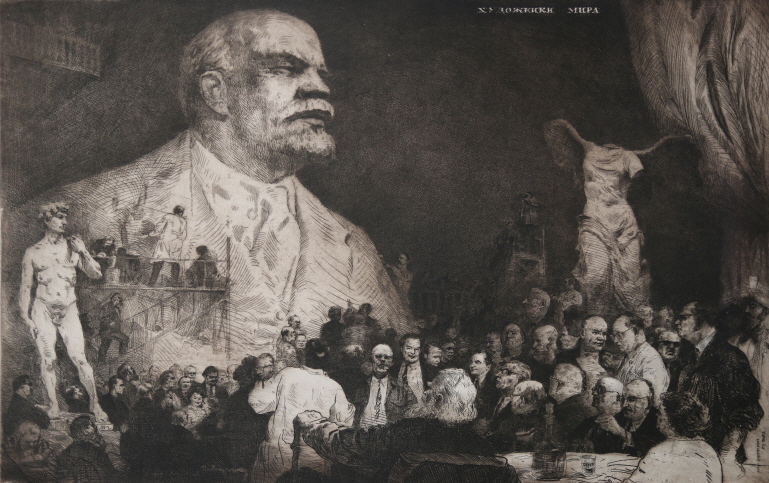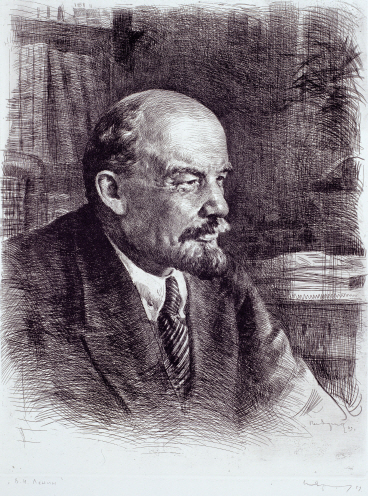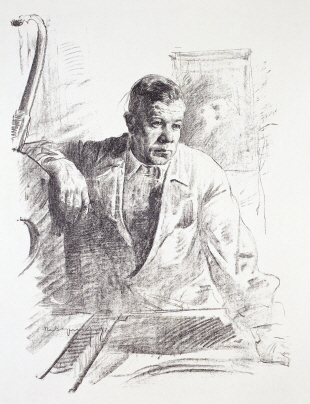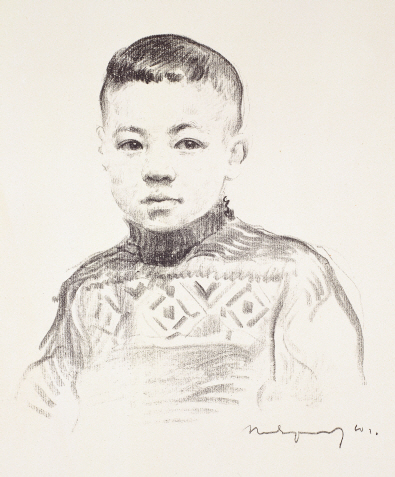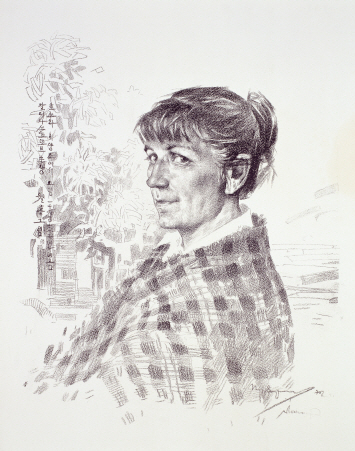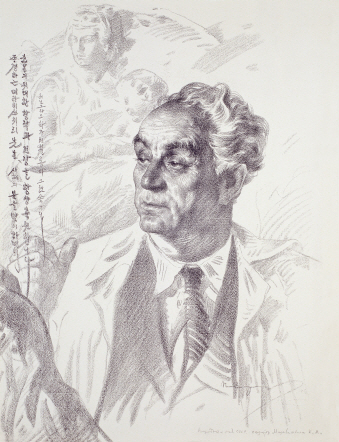Byun Wol-ryong (Pen Varlen)
1916 Born on
September 29th, as the youngest son in the village of Korean
refugees in Primorsky Krai, Russia, with 2 older sisters. His father, Byun
Chang-ho, who was a farmer at the time, left his family even before he was
born. His father’s fate is still unknown.
1922 (age 6) His
grandfather requested a senior Chinese calligrapher living near the village of
Korean refugees to teach him. Calligraphy was the only education he received at
the time, but he had to quit after his grandfather passed away. However, the
Chinese calligraphy he learned at that time was the foundation for him becoming
an artist in the future.
1926 (age 10) Entered a
‘4-year-course Korean school’ located in Shinhanchon (New Korean Village) in
Vladivostok, Russia. Considering that the usual enrollment age was 7, he was
about 3 years behind.
1928 (age 12) Following the
reform of the school system (changing into 10-year-course) at the time, he
transferred to the ‘8th Vladivostok Model 10-Year-Course School.’ This
school was established by Goryeoin (ethnic Koreans in Russia and Central Asia)
and was only attended by their children. It was the most prestigious Korean
school at the time. He started to reveal his innate talent in art while
attending this school.
1932 (age 16) He started to
paint illustrations professionally for a children’s book publisher starting
from the 7th grade, even though he never received formal art
education. He painted all of the illustrations in the text books used by all
grades for all subjects, for all of the Korean schools in the Primorsky Krai
area. He also helped his family financially by painting posters and signs for
theatres.
1936 (age 20) Graduated
from middle and high school with outstanding grades despite his situation;
making a living and studying concurrently. He continued to do part-time
painting jobs.
1937 (age 21) Entered
Sverdlovsk (currently Yekaterinburg, Russia) Art College located near the Ural
Mountains. As the enforced deportation was abruptly initiated by Stalin, the
Koreans living in Primorsky Krai were deported to Central Asia. He was away
from Primorsky Krai at the time so he was not deported. However, his family was
deported to Tashkent, so he lost contact with his family for a while.
1940 (age 24) Graduated
from Sverdlovsk Art College with outstanding grades and admitted to the
Paintings Department of ‘The Russian Academy of Fine Arts (currently I. Repin St.
Petersburg State Academy Institute of Painting, Sculpture and Architecture)’
located in Leningrad (currently Saint Petersburg, Russia). Here, he met his
lifelong companion and wife, Derbizova Praskoviya Trofimovna, 4 years younger
than him. Although he was a student of the Paintings Department, he studied
etching and lithography at the workshops in the Graphics Department whenever he
had a chance, to widen his studies.
1941 (age 25) In early
June, when he finished his first year at the Academy, he went to Tashkent,
where his mother and sister lived. Then he unexpectedly faced the German-Soviet
War. He tried to return to the Academy when the new year started, but could not
do so due to the ‘Siege of Leningrad.’ He then started to work as an
illustrator for a publisher in Tashkent.
1942 (age 26) On February 19th, the Academy escaped
the sieged Leningrad to find refuge at Samarkand, Uzbekistan. The Academy
arrived at Samarkand around late March, and he joined them around the time the
new semester had begun. There, he studied and produced
political propaganda posters at the Tashkent publisher at the same time.
1944 (age 28) The Academy moved their refuge to Zagorsk
(currently Sergiy Radonezhskiy, Russia). Here, he married his classmate, Derbizova Praskoviya Trofimovna. He visited his ill mother in
Tashkent alone during summer break. Around late September, the Academy returned
to Leningrad from Zagorsk. He returned to Leningrad along with the students of
Leningrad Conservatory, who had fled to Tashkent. The Russian Academy of Arts
was renamed as ‘I. Repin St. Petersburg State Academy Institute of Painting,
Sculpture and Architecture’ after the war.
1945 (age 29) World War II ended for Russia on May 9th.
His first son Alexander was born. His mother, who was seriously ill, passed
away.
1947 (age 31) Graduated first in his class and received a
gold medal from I. Repin St. Petersburg State Academy
Institute of Painting, Sculpture and Architecture (hereafter Repin Academy),
through paintings with the theme, Korean
fishermen, under Professor A. A. Osmyorkin. Simultaneous to graduation, he
entered graduate school at the Repin Academy through professors’
recommendations and devoted himself to his Ph.D. studies under Professor B. V.
Ioganson. In the same year, he became a member of the Artists’ Union of the
USSR, Leningrad branch. Since then, he regularly participated in the Union’s
exhibitions except in 1959.
1950 (age 34) His work, Lenin and Stalin on Vacation, Significant Friendship was presented
in all USSR exhibitions in Moscow. He began to regularly participate in
exhibitions.
1951 (age 35) Graduated from graduate school with Lenin and Stalin on Vacation, Significant
Friendship as his graduation work. Started to work at the Drawing
Department, Repin Academy as an assistant professor. Received his Ph.D. degree
in Russian Art.
1952 (age 36) His second son Sergey was born.
1953 (age 37) Simultaneous to his promotion as an
associate professor, he was accredited to the Ministry of Education of North
Korea by the Ministry of Culture of the USSR as an advisor since June, 1953. As
he worked as the dean of the Pyongyang College of Arts and advisor for the
Department of Painting, Drawing, and Stage Art, he not only redressed the
education system of the Pyongyang College of Arts, but also advised and
promoted professors.
1954 (age 38) In September, he returned to Russia and was
reinstated to the Repin Academy. He presented works he painted in North Korea
in exhibitions held by the ‘Leningrad Union of Soviet Artists’ and ‘Artists’ Union of the USSR.’ He started to fill his other
exhibitions with drawings, portraits, and landscapes he created in North Korea.
The theme related to his motherland acted as the backbone of his works for a
while. With the support of the USSR Art Academy, he participated in the
publishing of “Methodology of Drawing and Painting,” in which the most influential professors at the time had written
for. He published his essay in it as well.
1955 (age 39) Assigned an art studio by the Leningrad
Union of Soviet Artists as a result of his activities as an artist and
research. He was granted the right of residency in an apartment by the government
authorities due to his successful dispatch mission in North Korea. However, the
leading members of the Leningrad party took it away from him, which led to his
realization of the sorrows of living as an ethnic minority. In August, he
conveyed his will to return to his motherland to an old friend, Jeong Sang-jin,
who was leading the ’Celebratory Concert for the 10 Year Anniversary of Korea’s
Liberation’ in Leningrad. However, Jeong was purged by the government,
therefore his will to return to North Korea was discarded.
1956 (age 40) He expressed his will to return to his
motherland to Lee Sang-jo, the ambassador in Russia. However, Lee was also
purged, so the hopes of returning dissipated once again, giving him intense
discouragement. Nevertheless, he continued to communicate with his
acquaintances in North Korea through letters.
1957 (age 41) Presented Liberation Day in Pyongyang, an oil painting on an approximate
size 300 canvas, in the ‘Anniversary Art Exhibition of the Leningrad Artists,’
dedicated to the 40th anniversary of the October Revolution.
1958 (age 42) His daughter Olga was born.
1959 (age 43) Applied for North Korea’s ‘Homecoming for
Ethnic Koreans Overseas Program,’ but he was the only person who was excluded
in the list. He realized that his exclusion was because he had been purged.
Perhaps his devastation was too great, since he did not participate in any
exhibitions and halted all activities this year.
1961 (age 45) Secured an apartment near his studio on his
own expenses. Traveled through Italy, Greece, Turkey, Albania, Yugoslavia, and
the Netherlands. He could not accept the fact that he had been purged, so he
visited the Primorsky Krai area every school break from
this year to 1964, to demonstrate the injustice he was experiencing, and to
relieve his resentment.
1963 (age 47) Became interested in the education methods
of the Royal Institute of Art in Stockholm during his visit to Sweden. He
painted his only oil on canvas self-portrait, Self-Portrait.
1964 (age 48) Starting this year, he renounced his hopes
towards his motherland, after visiting the Primorsky
Krai area once more. From here on, he seized to paint his motherland. He
created a landscape etching of his hometown, Shkotovo.
1966 (age 50) He resumed visiting the Primorsky Krai area every school break, searching for his identity,
until the early 1980s.
1970 (age 54) Visited the
Netherlands and Belgium.
1972 (age 56) Visited
Prague for a field trip for sketching with his students at the Repin Academy.
1973 (age 57) Finished his
oil painting, People of Our Times and
presented it in ‘1973 Leningrad Artist District Exhibition.’ The size of the
painting was as large as 360x531cm, and he worked on it for 3 years from 1970
to 1973. The whereabouts of this painting is currently unknown.
1974 (age 58) Revisited
Tashkent. Based on his impression from his trip to Central Asia, he created
numerous series of etchings. In Autumn, he traveled to Hungary.
1977 (age 61) At last, he
was promoted as a full-time professor at the Repin Academy. Although it took
him 24 years to be promoted, it is greatly significant because it defeated the
discrimination towards and the sorrows of ethnic minority artists.
1981 (age 65) Traveled to
France.
1983 (age 67) Traveled to France
and Portugal.
1985 (age 69) Retired from
the Repin Academy due to health issues, and became a pensioner. Even after
retiring as an educator, he continued on to create works and remained
passionate about painting.
1990 (age 74) Passed away
on May 25th after suffering a stroke. His works were presented in Golden Bridge, an exhibition organized
by the Hibel Museum of Art (Palm Beach, U.S.A). Although this exhibition opened after his death, it is recorded
as his first exhibition held in the West, away from Russia. However, according
to the family of the deceased, only 4 out of the 5 paintings that were
presented were returned, and they were not able to retrieve Still Life with Jasmine (1969, Oil on
canvas, 58x78cm).




